When my husband and I decided to go to the city of Oaxaca with some friends, the first choice we faced was how to get there—via Mexico City on various airlines or nonstop from LAX on a no-frills Mexican airline called Volaris. We opted for the latter. And then we made the mistake of reading reviews; a lot of people have had poor experiences on the airline. (Think Spirit Airlines.) Our flight there turned out to be uneventful, although 1) it departs from an annex to the Tom Bradley International Terminal that takes about 15 minutes extra to reach, and 2) Volaris even charges for water.
We thought we were on safer ground with accommodations, having chosen Hotel Escondido based on a personal recommendation. The place is wonderful to look at, with a cozy restaurant, a pretty courtyard, and a rooftop bar, and the staff was helpful and friendly.
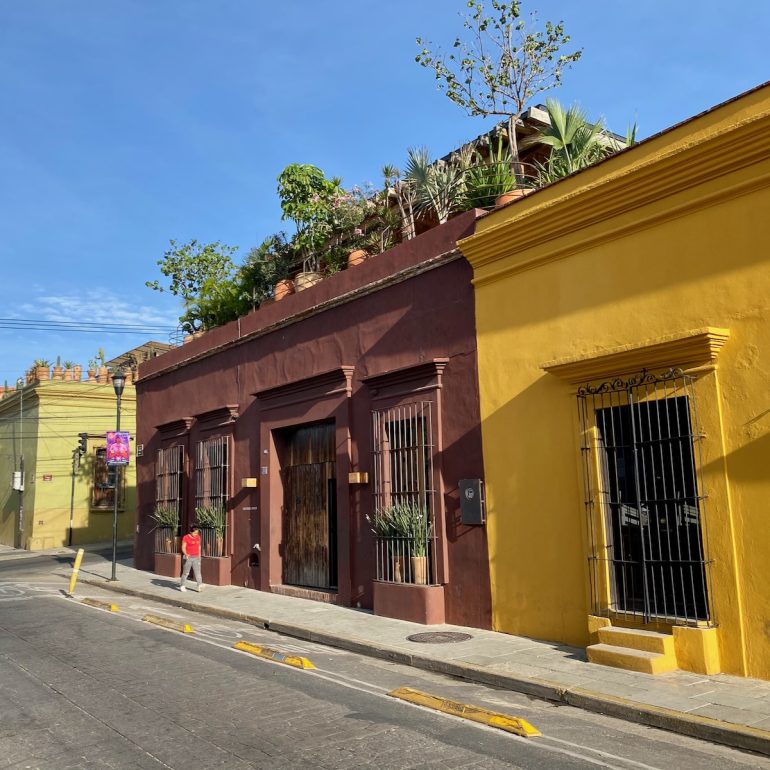
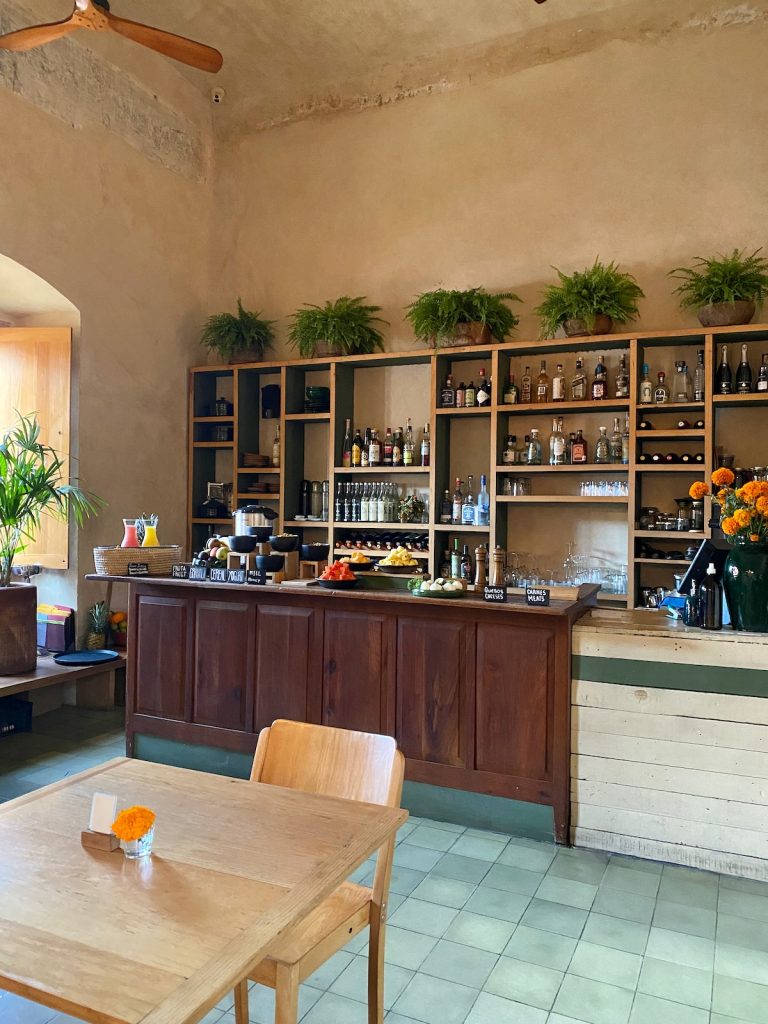

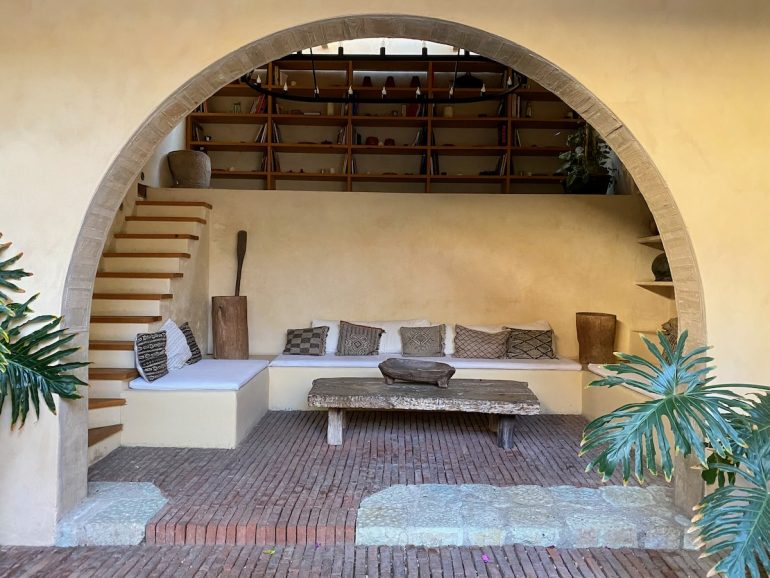
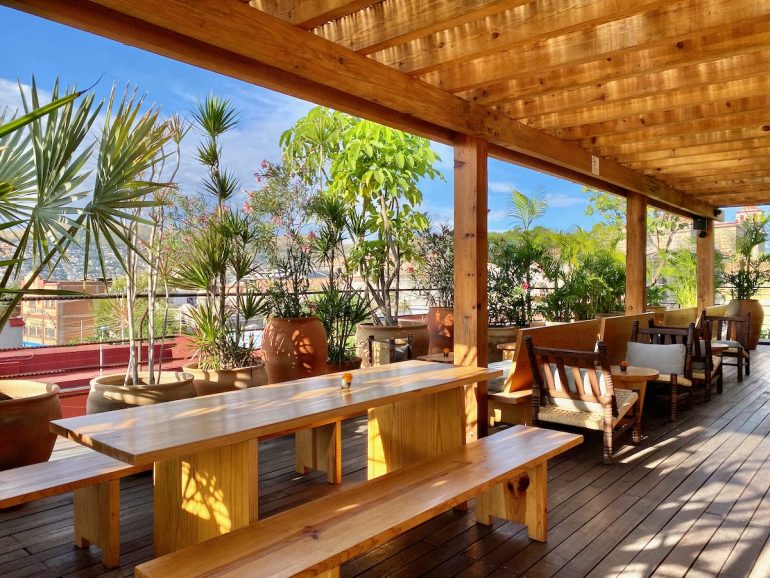 You’ll want to be careful on the stairs to the bar.
You’ll want to be careful on the stairs to the bar.
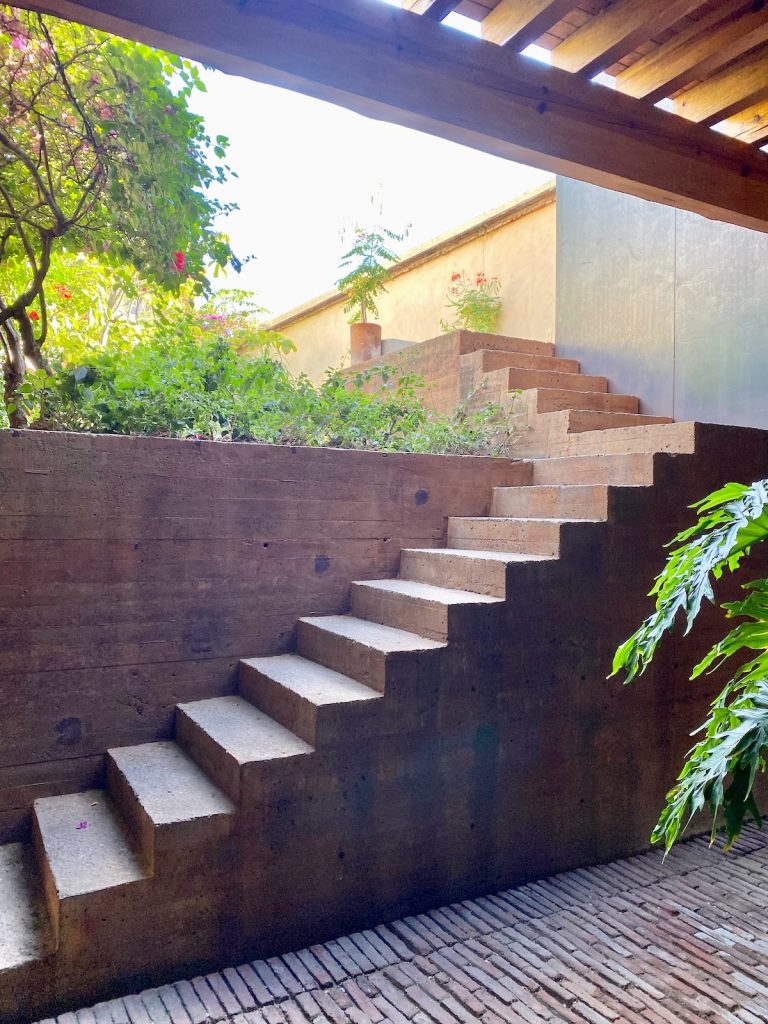 None of us, however, would recommend the hotel because it was insanely loud—not from other guests, but from the stream of noisy buses and trucks that climb a hill along one side of the building. (They stink, too. Adam tried to sit by the rooftop pool but gave up because he was losing lung cells by the minute.) We booked the Top Suite, which is called that because it’s the fanciest room, not because it’s up high. But we felt like we had been entombed in concrete; only the shutters at the top of the street-facing windows open, and the courtyard windows leave you exposed to staff and guests.
None of us, however, would recommend the hotel because it was insanely loud—not from other guests, but from the stream of noisy buses and trucks that climb a hill along one side of the building. (They stink, too. Adam tried to sit by the rooftop pool but gave up because he was losing lung cells by the minute.) We booked the Top Suite, which is called that because it’s the fanciest room, not because it’s up high. But we felt like we had been entombed in concrete; only the shutters at the top of the street-facing windows open, and the courtyard windows leave you exposed to staff and guests.
 So we moved to a much smaller Balcony Room, where we spent one sleepless night. (The trucks and buses were a nuisance even with the window closed.) It had a lovely view, though.
So we moved to a much smaller Balcony Room, where we spent one sleepless night. (The trucks and buses were a nuisance even with the window closed.) It had a lovely view, though.
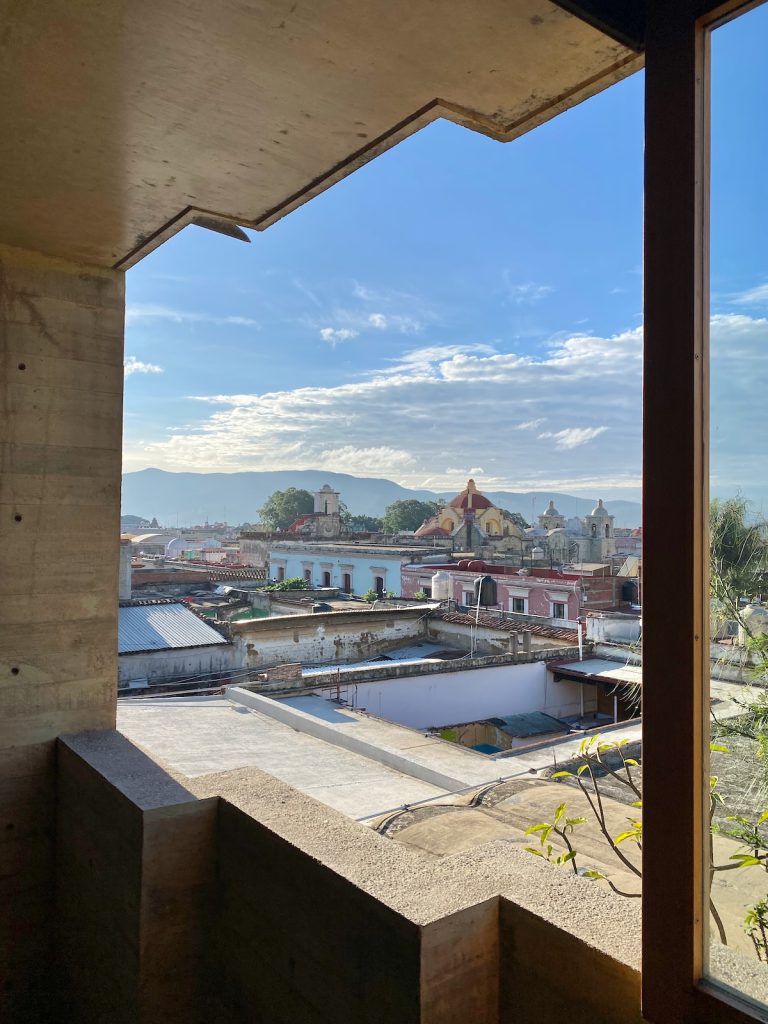 And then we reverted to the Top Suite, because being entombed was sounding pretty good. We could still hear the traffic, but it was bearable—like sleeping under a freeway instead of alongside it. Unfortunately, there was also the persistent smell of dampness. The room is below the pool, and a leak created a tiny stalactite that dripped water onto the floor.
And then we reverted to the Top Suite, because being entombed was sounding pretty good. We could still hear the traffic, but it was bearable—like sleeping under a freeway instead of alongside it. Unfortunately, there was also the persistent smell of dampness. The room is below the pool, and a leak created a tiny stalactite that dripped water onto the floor.
The hotel is surely one reason none of us loved Oaxaca—despite how empty many of these photos make it look, the city is busy enough that a respite would be nice. And our expectations were likely too high: a few months before we went, a Travel + Leisure magazine readers’ poll named Oaxaca the world’s best city.
It’s certainly geographically pretty, with hills on the horizon, and the colorful colonial buildings cast a spell.
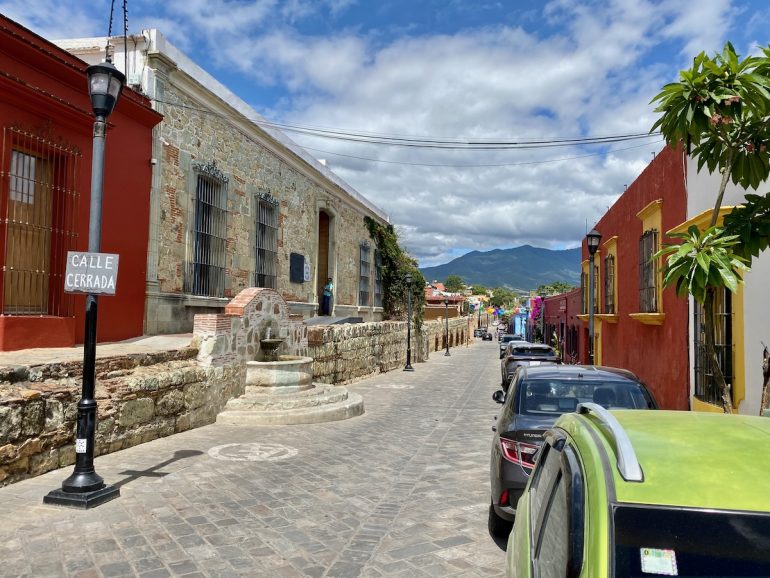
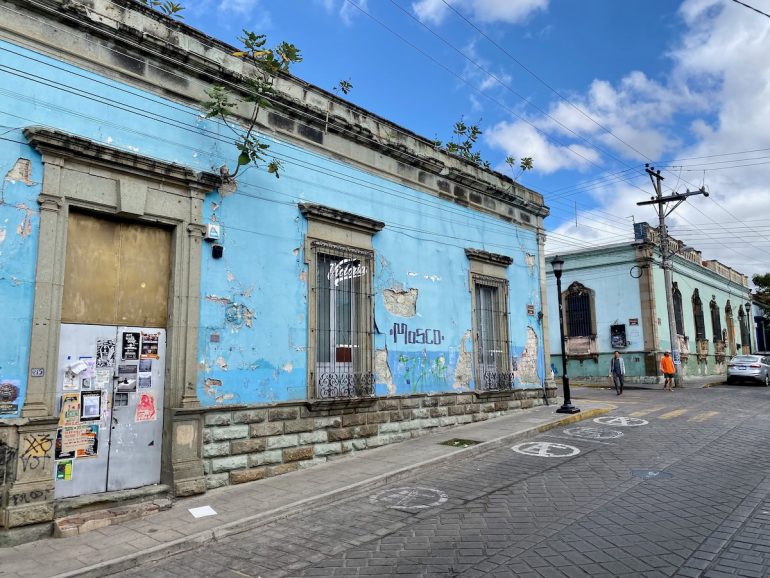
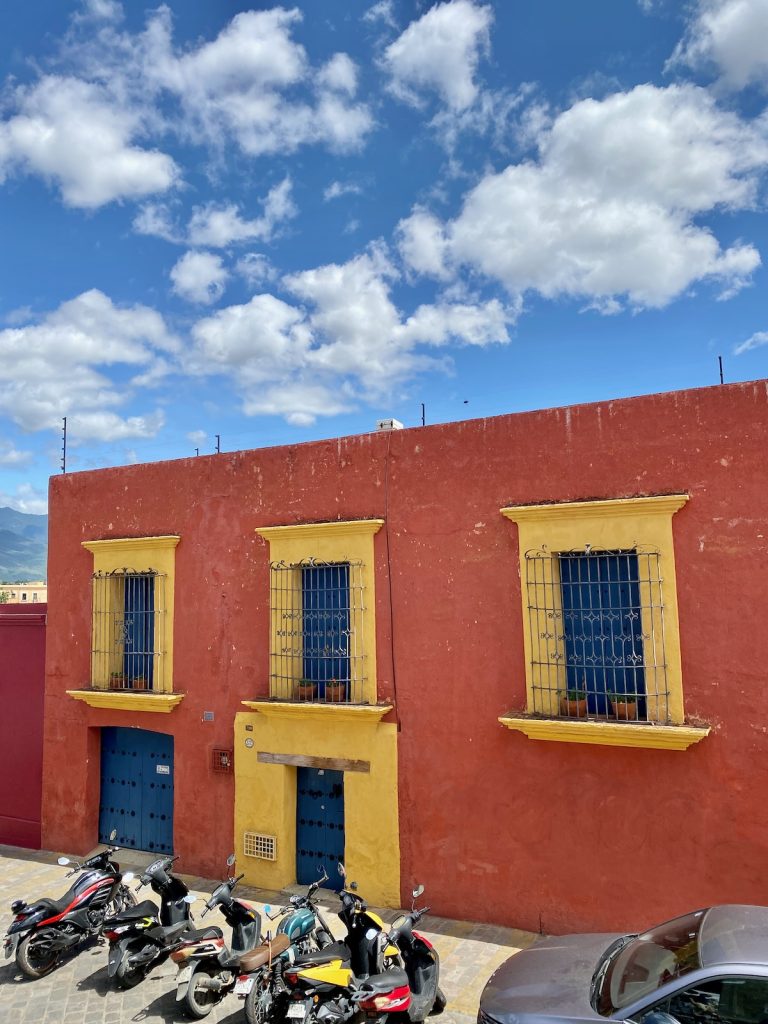
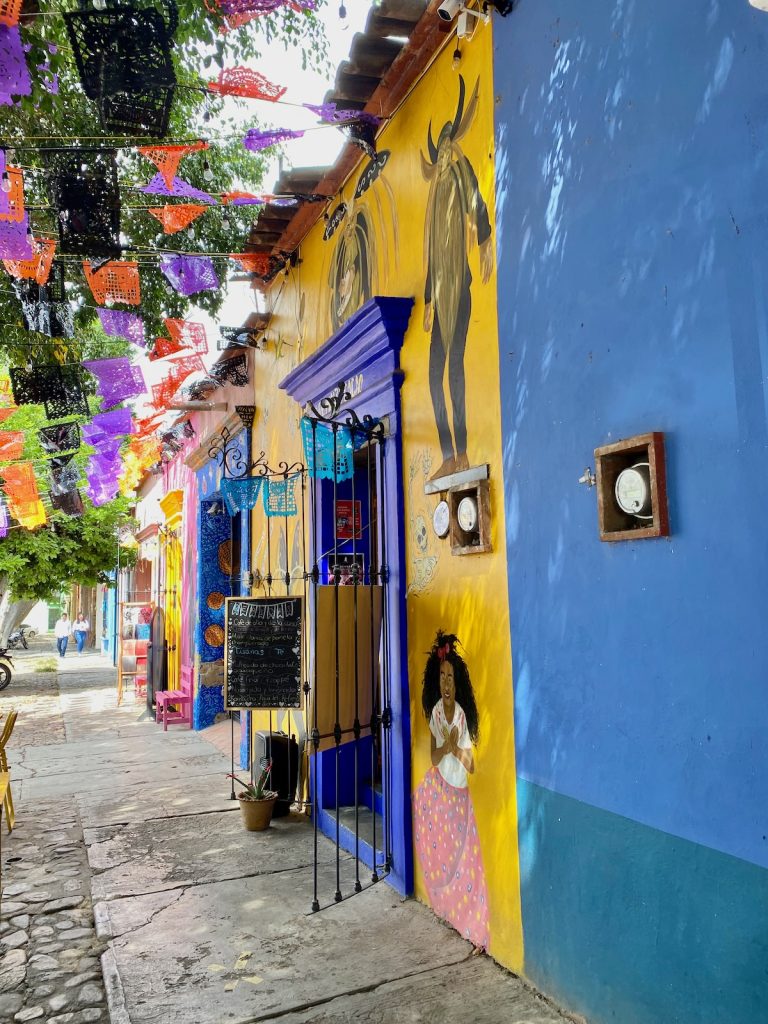
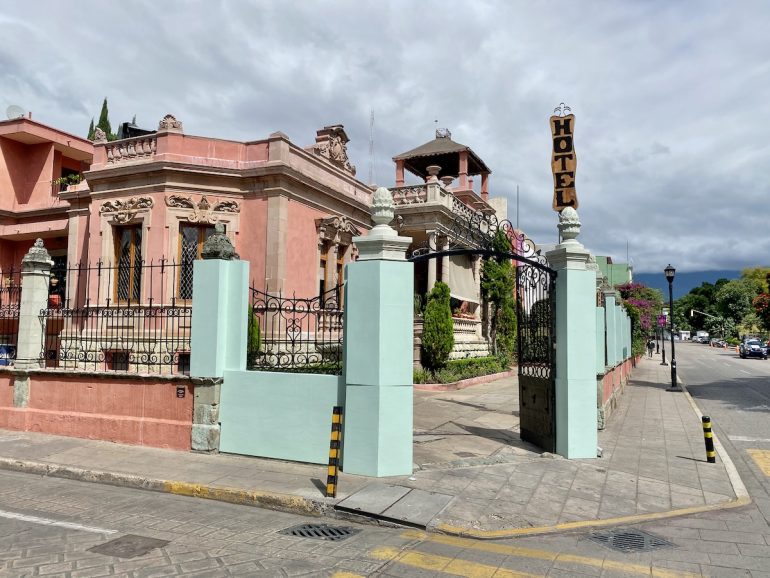
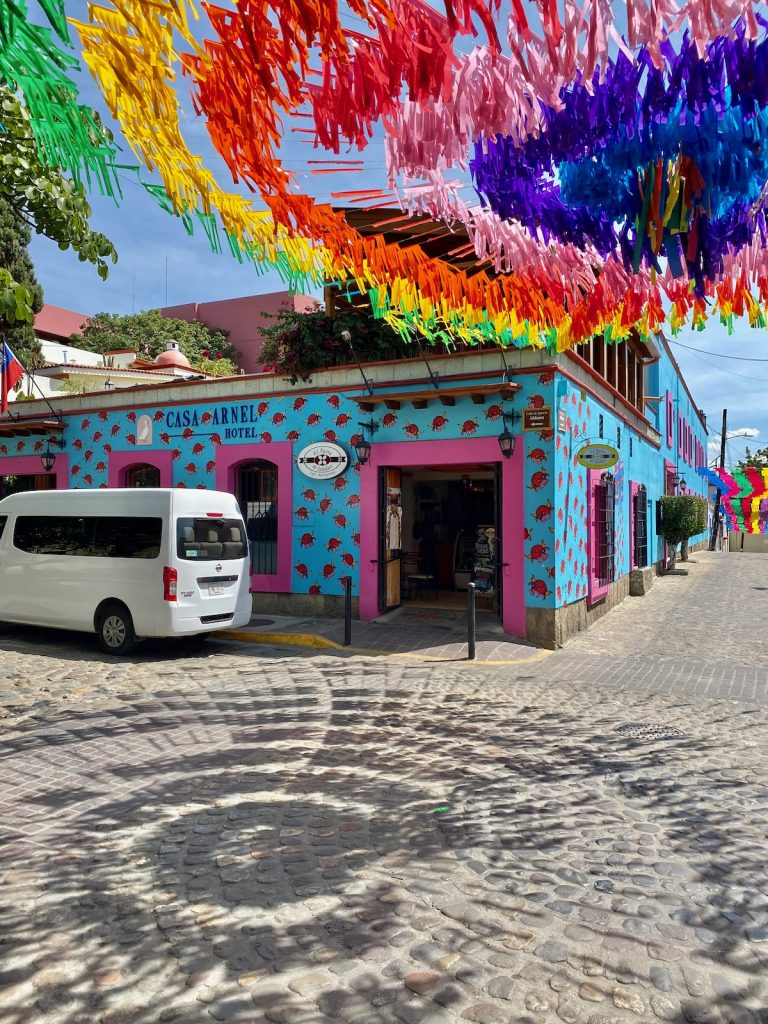 There’s grand architecture, too.
There’s grand architecture, too.
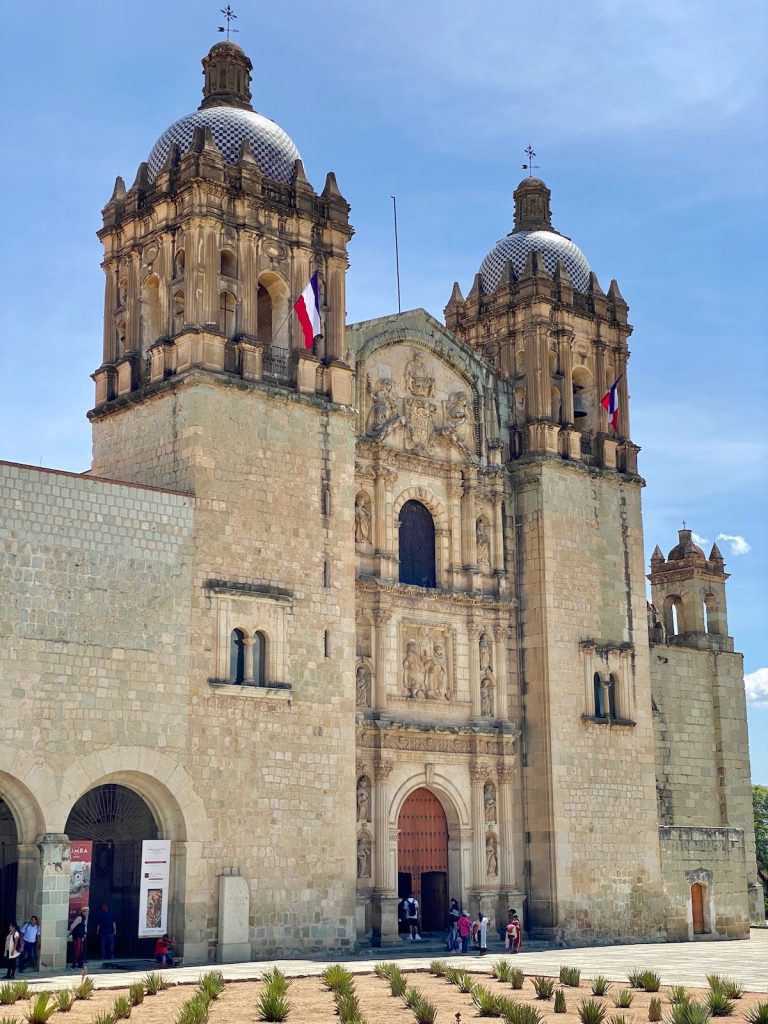
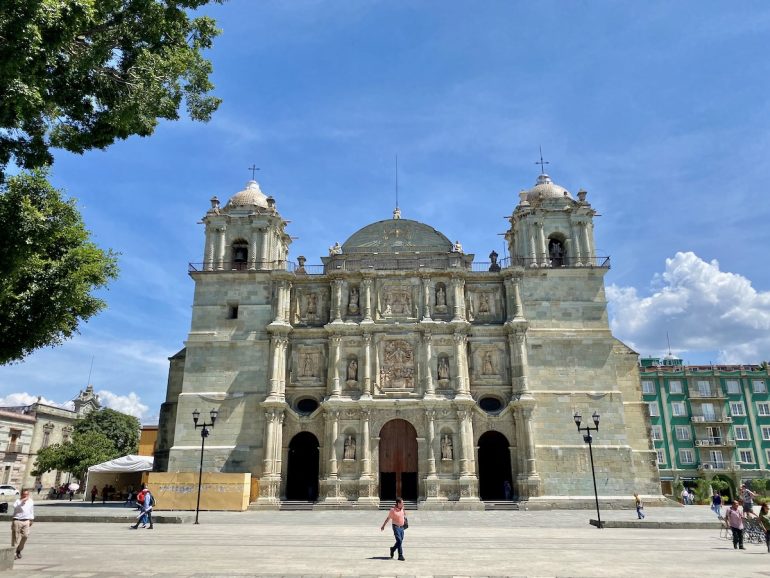
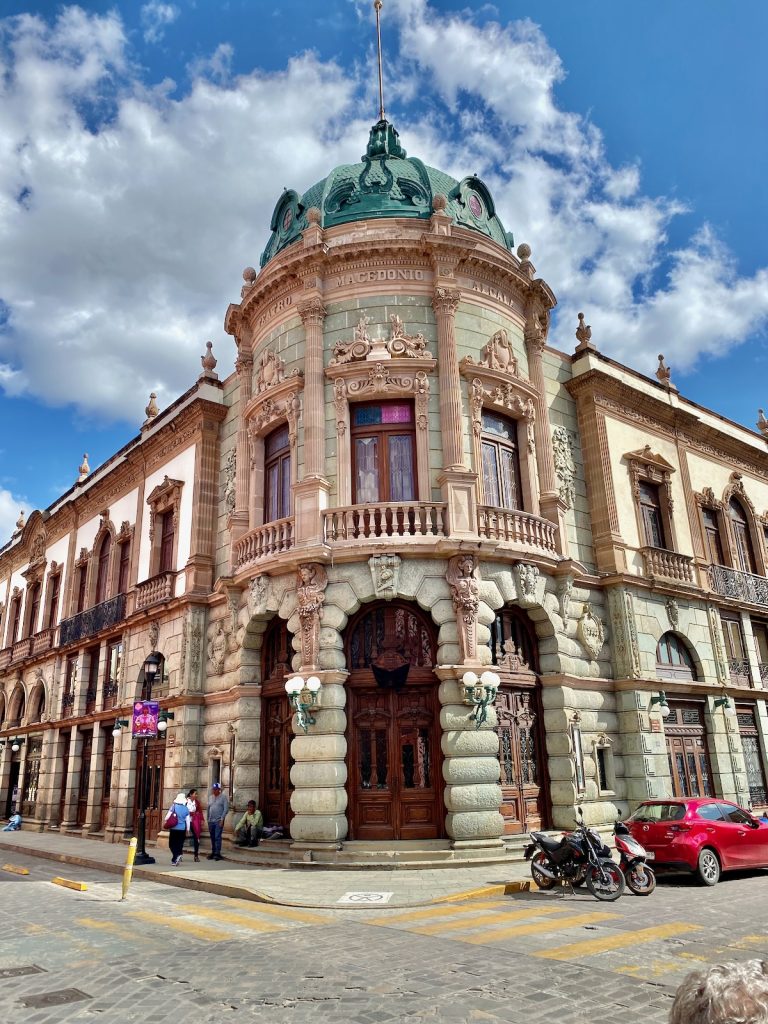
I got the sense, however, that Oaxaca is trying so hard to maintain what has made it special—and what has drawn visitors—that it now comes off a little stunted, the way popular towns sometimes get. The city center often has a touristy vibe: staffers stand outside restaurants and try to lure you in; the shops all sell the same kind of stuff; and businesses rarely felt like a labor of love. Adam, meanwhile, expected walking around to be more pleasant, rather than on narrow sidewalks amid the noxious clamor of traffic.
But there’s still a lot to admire—you don’t get voted world’s best city for nothing—and the four of us had a great time even if we agreed that we won’t be returning.
For one thing, and this is not intended as a backhanded compliment, the city is far from Disneyfied. Picturesque decay abounds.
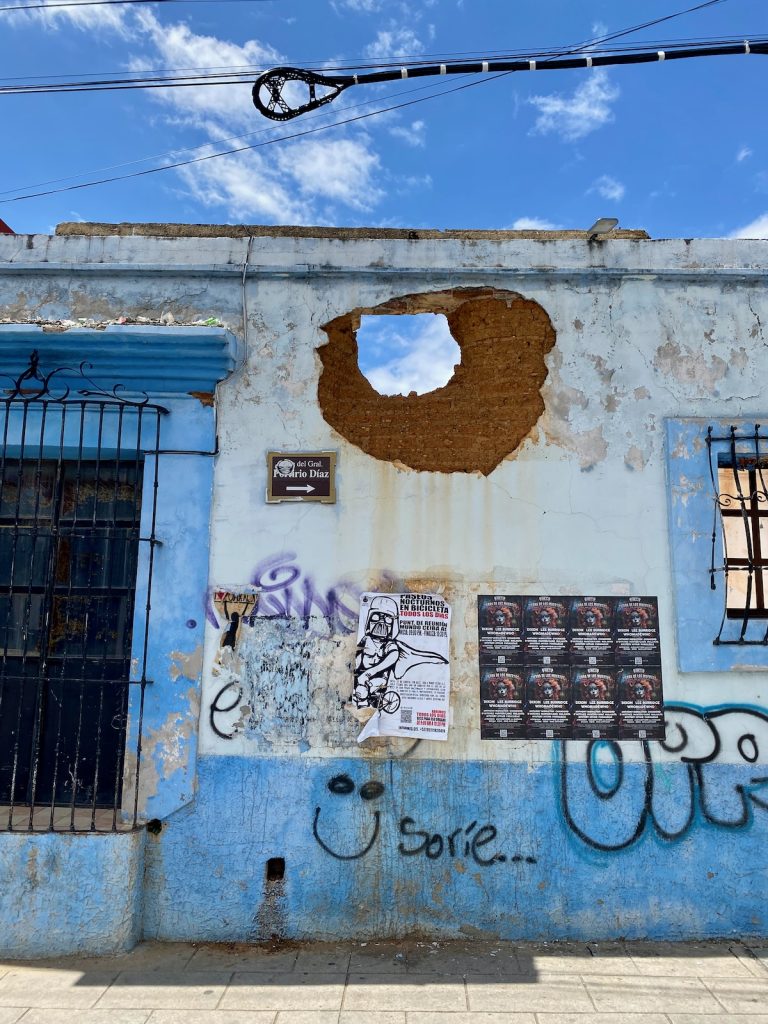
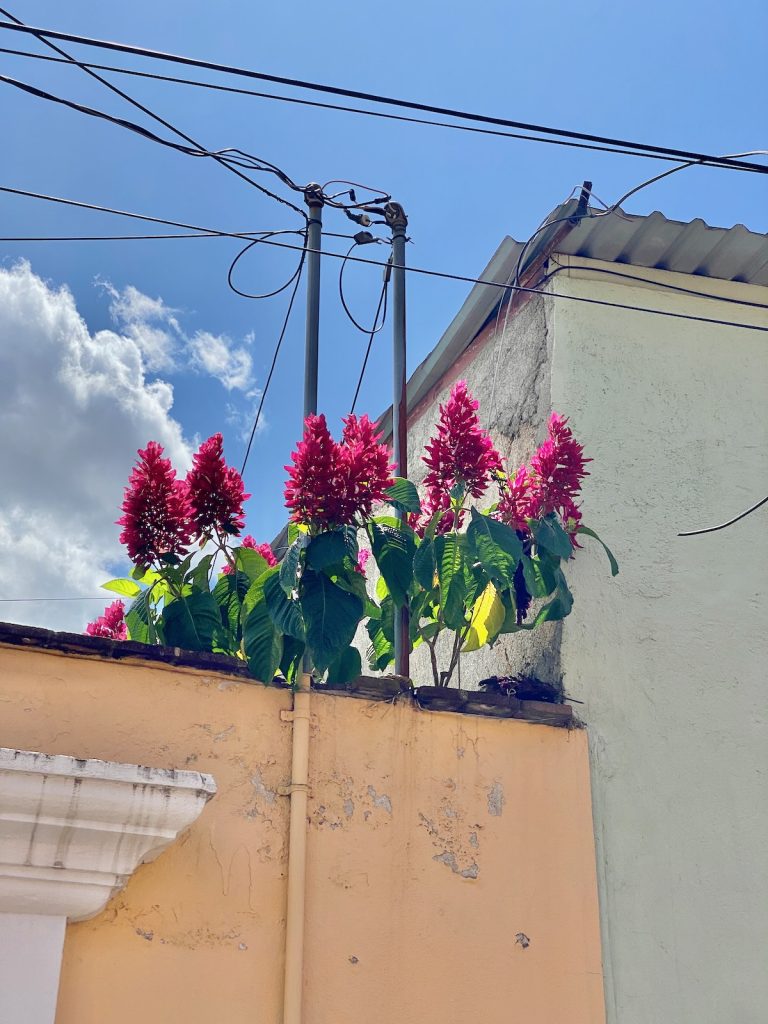 And I fell in love with the doorways—it’s a style I don’t recall seeing in Mexico City.
And I fell in love with the doorways—it’s a style I don’t recall seeing in Mexico City.
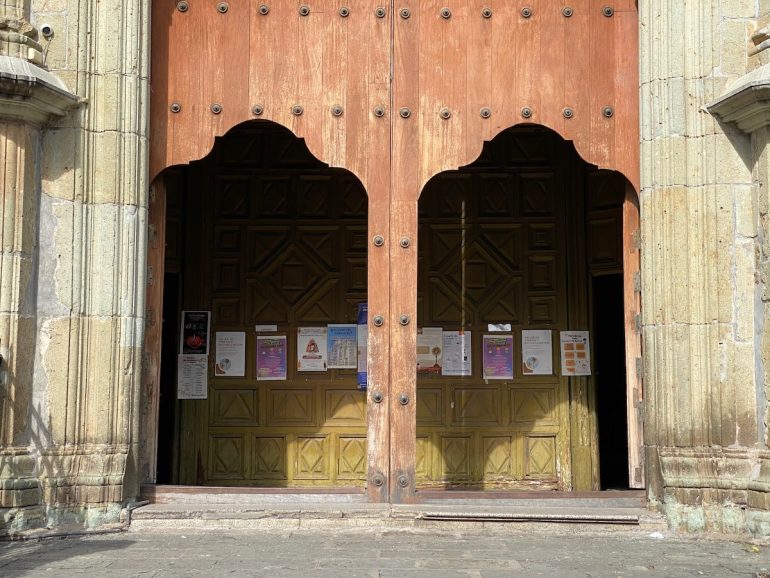
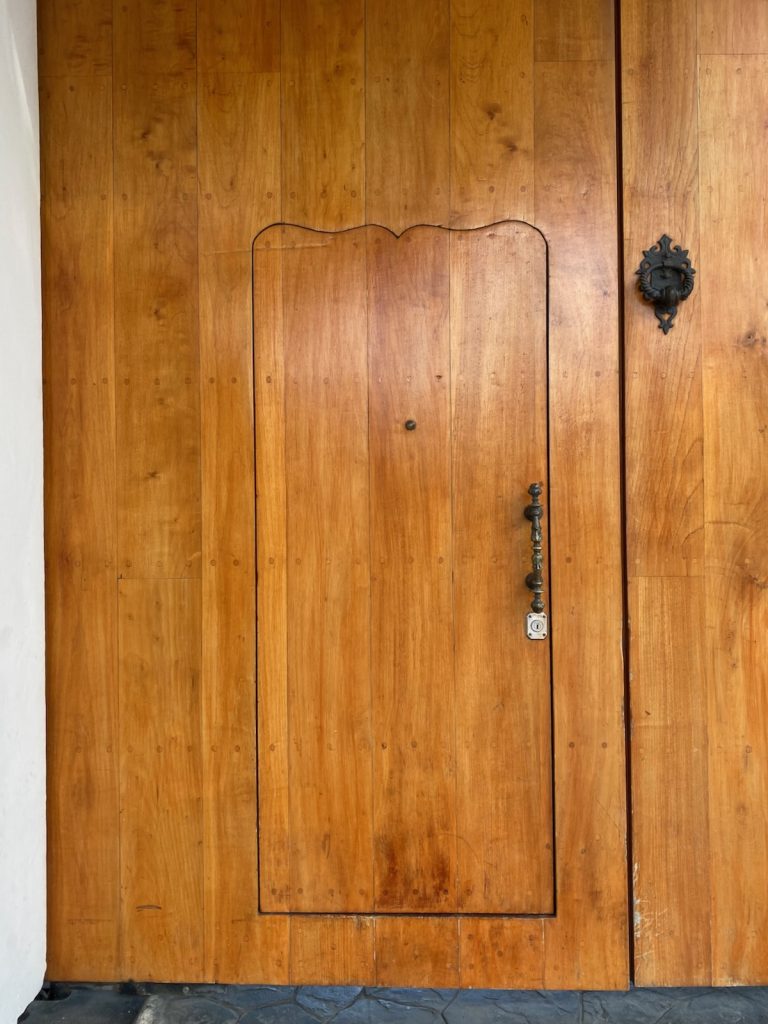 The city is also known for its vibrant street art—there’s a lot of wheat pasting, in particular.
The city is also known for its vibrant street art—there’s a lot of wheat pasting, in particular.
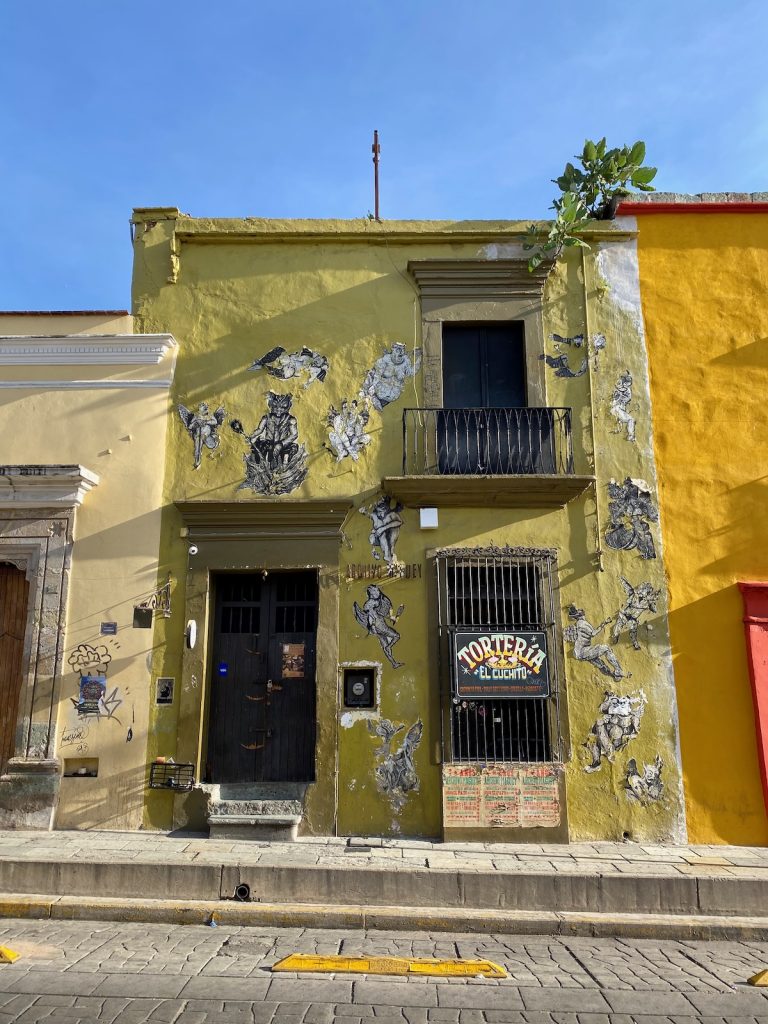
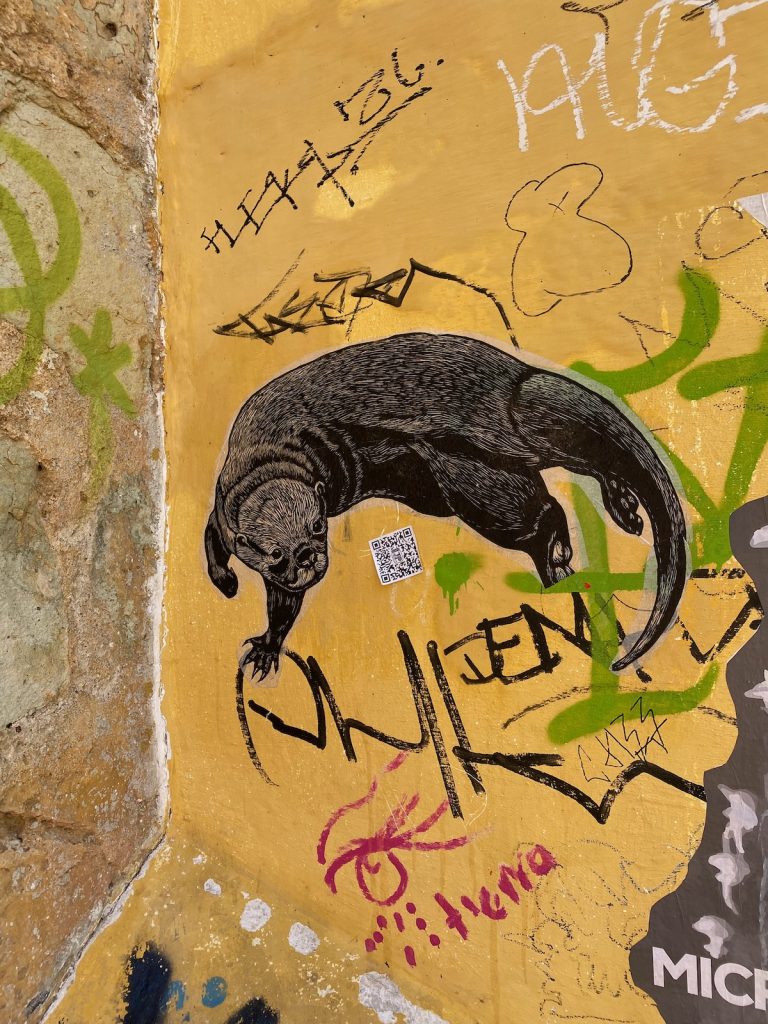
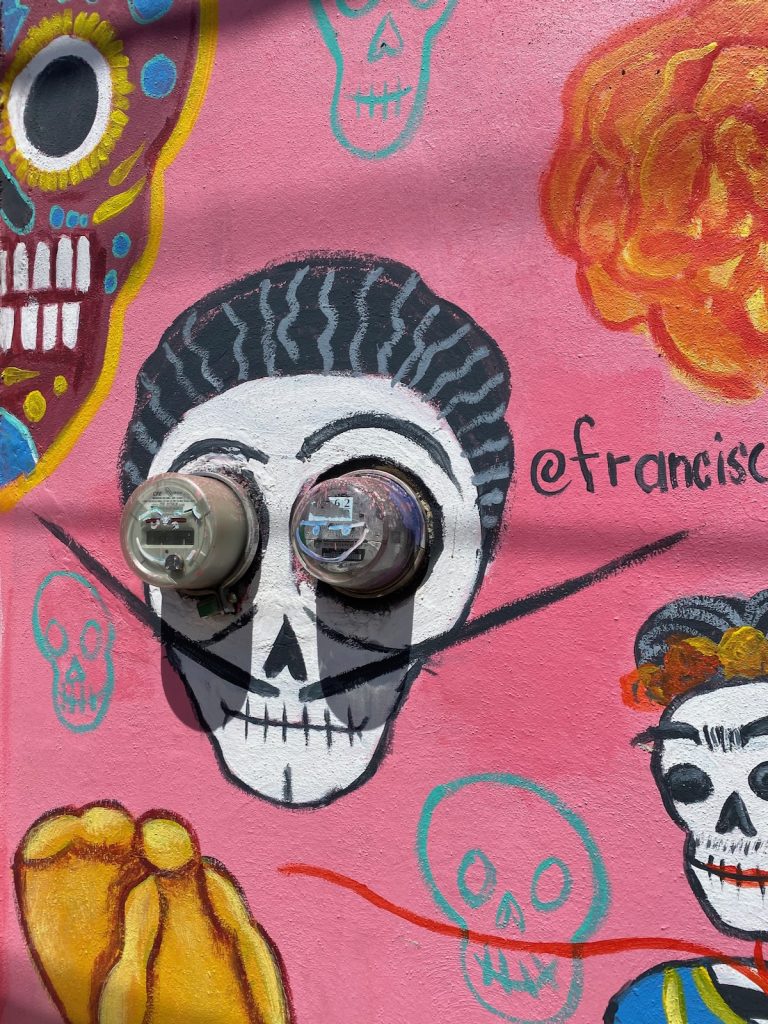
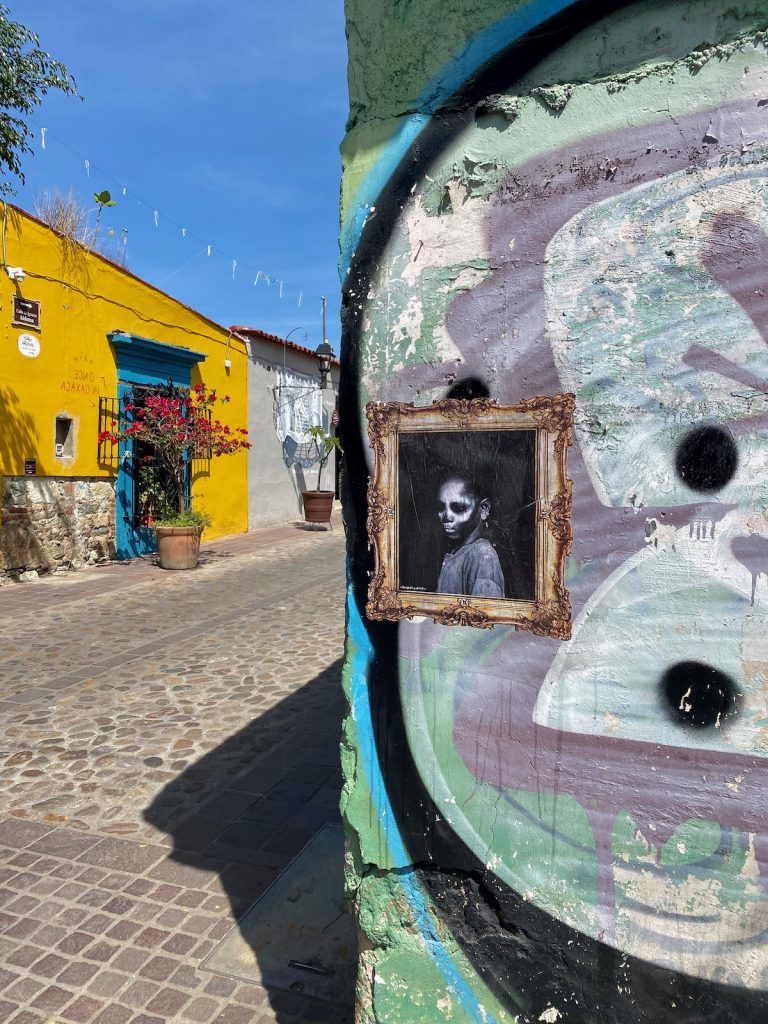 My favorite street-art moment was actually a poster advertising a screening of Psycho (Psicosis in Spanish).
My favorite street-art moment was actually a poster advertising a screening of Psycho (Psicosis in Spanish).
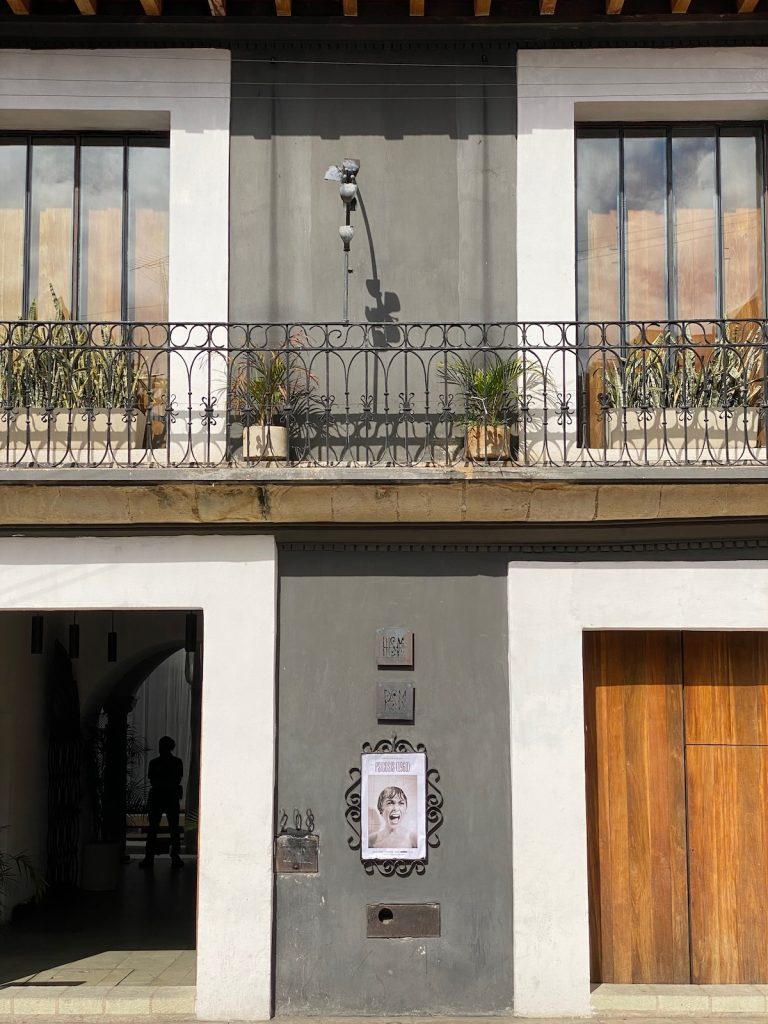 By all accounts, there’s a perpetual festiveness in Oaxaca. We were in town a couple of weeks before Día de los Muertos, but I’m not sure which decorations were for the holiday.
By all accounts, there’s a perpetual festiveness in Oaxaca. We were in town a couple of weeks before Día de los Muertos, but I’m not sure which decorations were for the holiday.
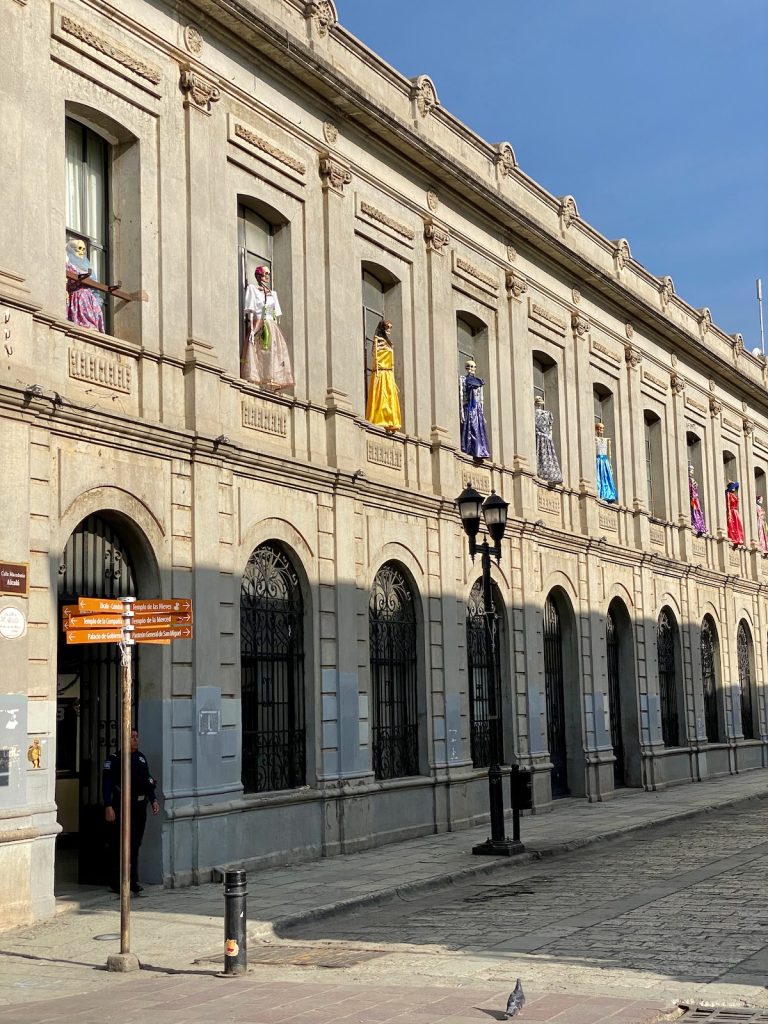
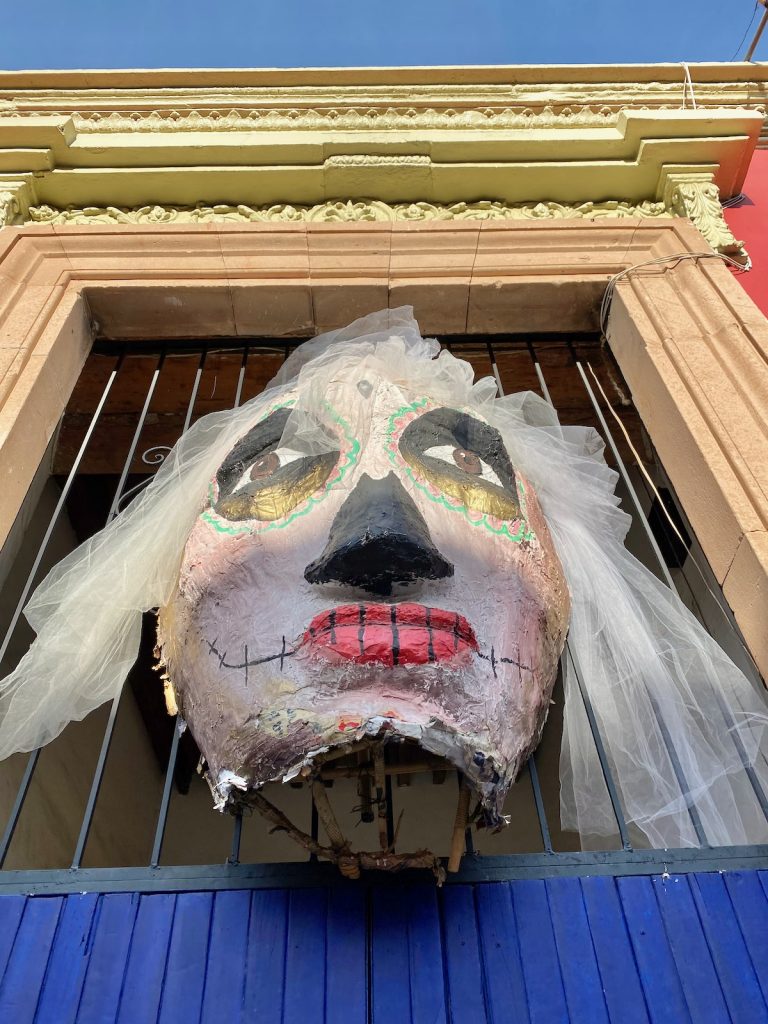
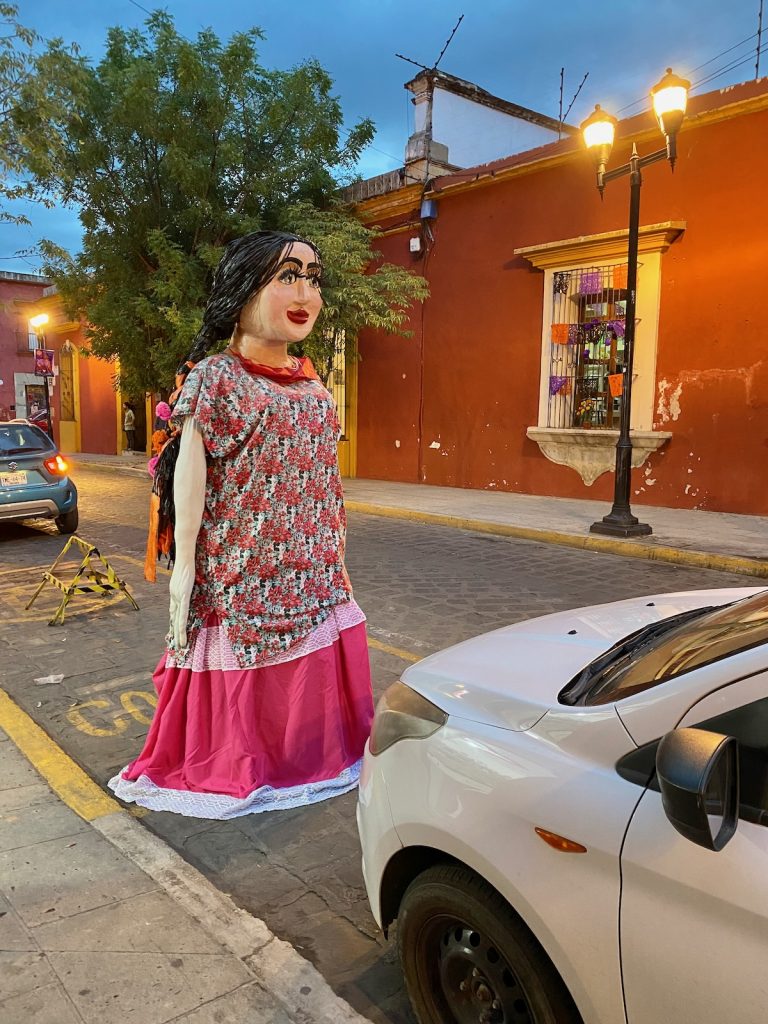 This bread, pan de muerto, definitely was.
This bread, pan de muerto, definitely was.
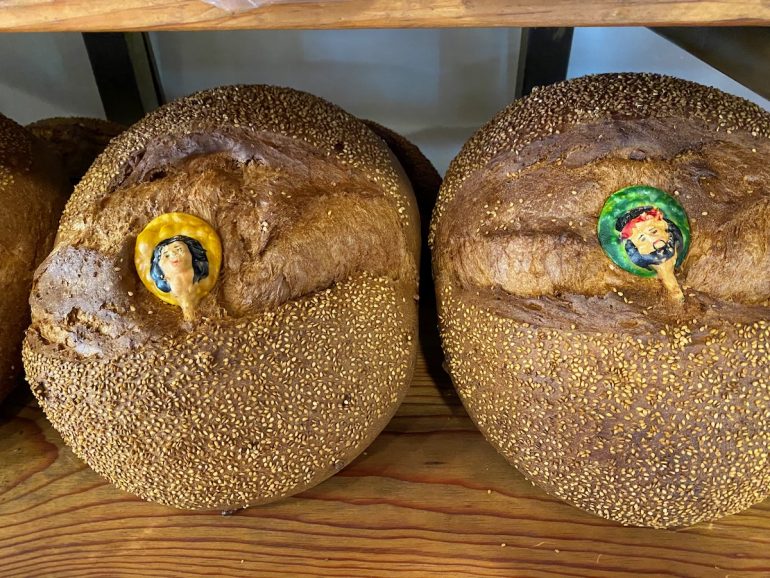 Oaxaca is famous for crafts and food. We looked in quite a few shops, and the best crafts we found were at the state-run ARIPO. I also bought a little cup at a chic provisions shop called Suculenta.
Oaxaca is famous for crafts and food. We looked in quite a few shops, and the best crafts we found were at the state-run ARIPO. I also bought a little cup at a chic provisions shop called Suculenta.
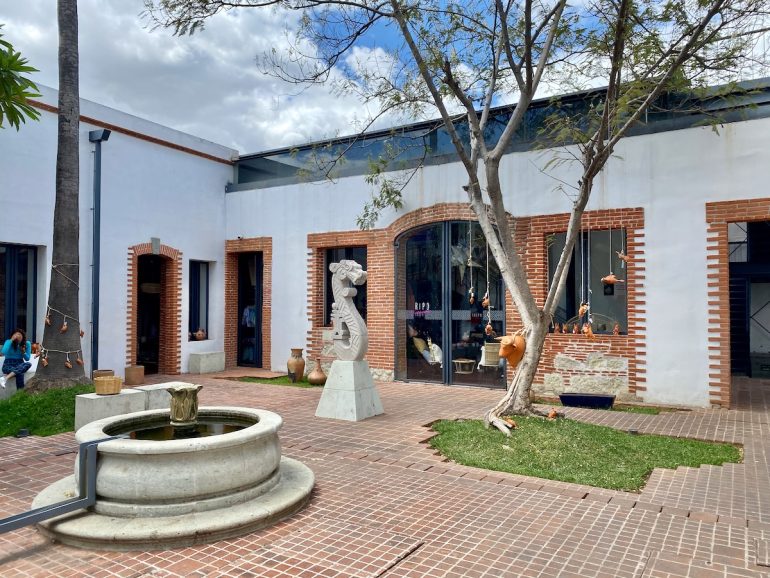
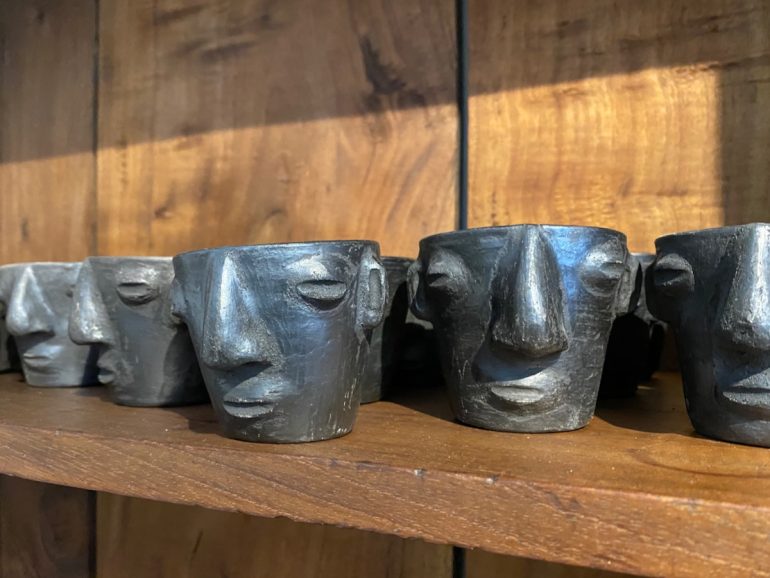 As for food, how do people learn about restaurants in other cities these days? I used to read magazines and keep files with recommendations, and now I just go to Eater and hope its roundup for a given city was written by someone knowledgable. Unlike the guide for San Francisco, which steered us wrong several times, the Oaxaca edition was spot-on. (Also recommended: Eater’s primer on Oaxacan cuisine.) One of our first stops was Rito Chocolatería, where we tried various versions—sweetened, unsweetened, with water or milk—of hot chocolate. And I took Eater’s advice to try an agua fresca at Casilda Aguas Regionales, but all the really interesting flavors were down to the dregs.
As for food, how do people learn about restaurants in other cities these days? I used to read magazines and keep files with recommendations, and now I just go to Eater and hope its roundup for a given city was written by someone knowledgable. Unlike the guide for San Francisco, which steered us wrong several times, the Oaxaca edition was spot-on. (Also recommended: Eater’s primer on Oaxacan cuisine.) One of our first stops was Rito Chocolatería, where we tried various versions—sweetened, unsweetened, with water or milk—of hot chocolate. And I took Eater’s advice to try an agua fresca at Casilda Aguas Regionales, but all the really interesting flavors were down to the dregs.
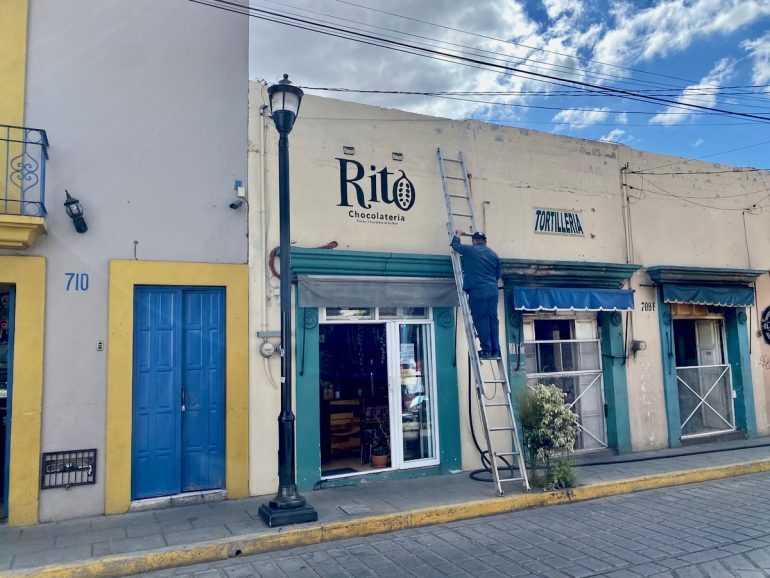
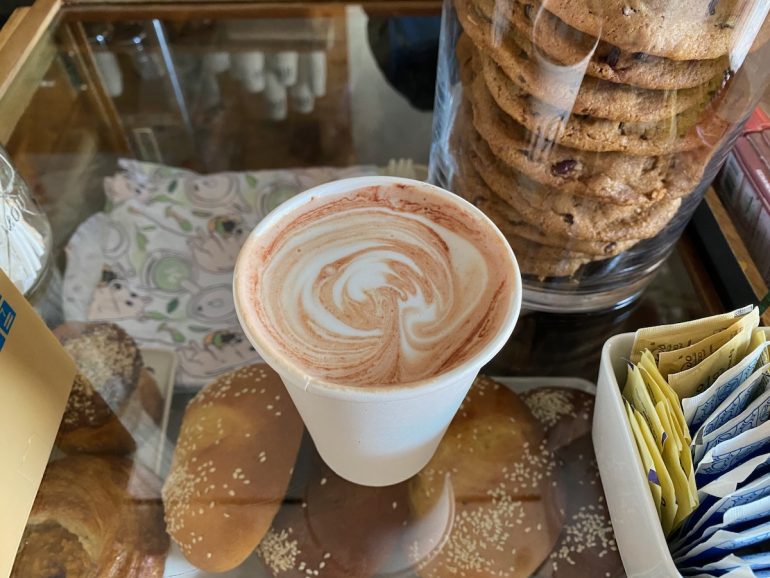
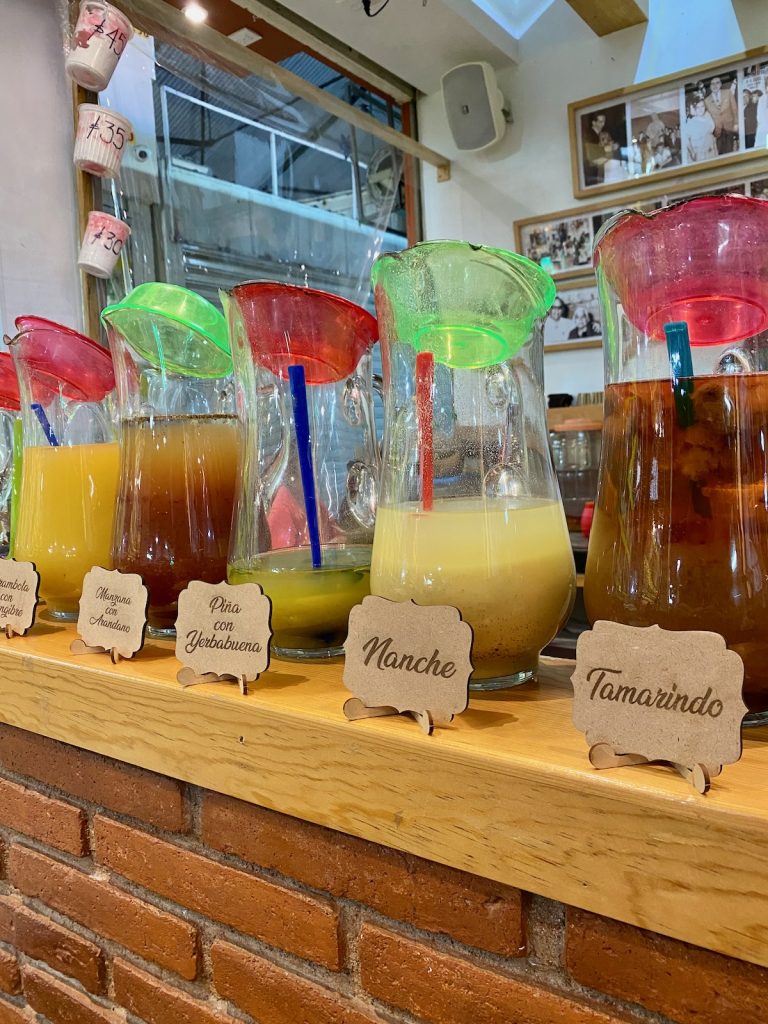 The same high-end restaurants are on everyone’s list. We found Origen uninspired, while the food at Levadura de Olla was very good but heavy, and it suffered from coming after our day-long food tour. (More on that in a bit.) Our friends’ favorite meal was a rooftop lunch at Casa Oaxaca.
The same high-end restaurants are on everyone’s list. We found Origen uninspired, while the food at Levadura de Olla was very good but heavy, and it suffered from coming after our day-long food tour. (More on that in a bit.) Our friends’ favorite meal was a rooftop lunch at Casa Oaxaca.
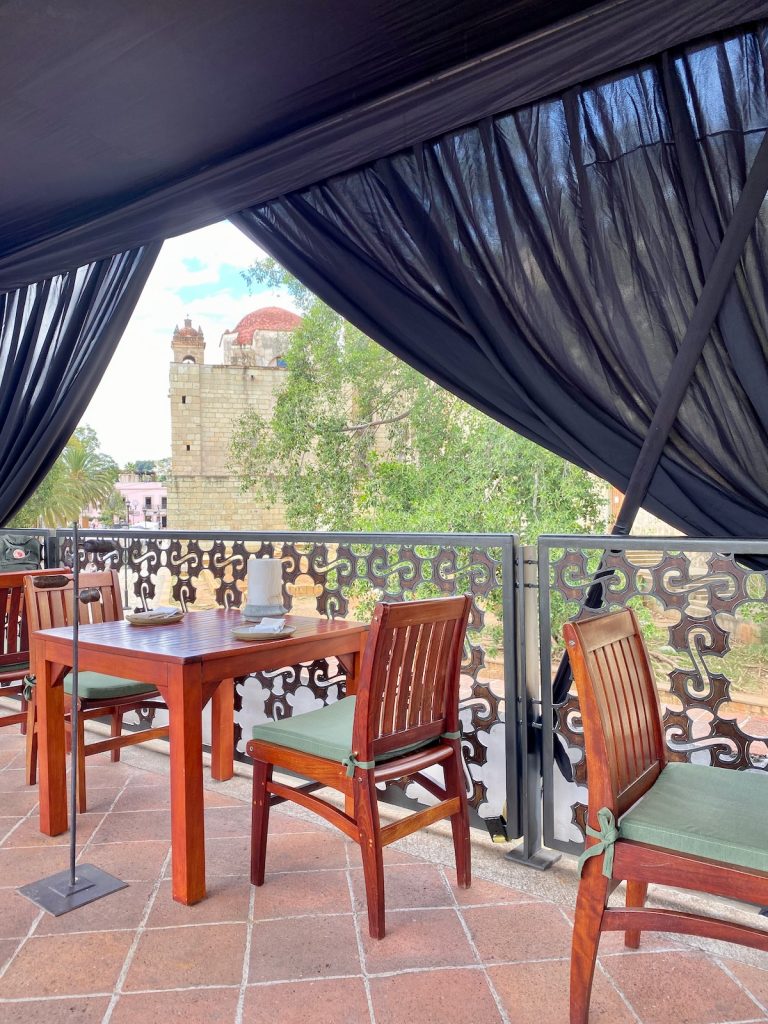 But I preferred Criollo. I’m an avowed fan of Enrique Olvera’s restaurants, and Criollo hit my spot: traditional Mexican flavors and ingredients, but in surprising combinations and sophisticated preparations. (That said, I wish the menu was à la carte.) The photo below is of quesabirria made with fish instead of beef or goat, and it was extraordinary.
But I preferred Criollo. I’m an avowed fan of Enrique Olvera’s restaurants, and Criollo hit my spot: traditional Mexican flavors and ingredients, but in surprising combinations and sophisticated preparations. (That said, I wish the menu was à la carte.) The photo below is of quesabirria made with fish instead of beef or goat, and it was extraordinary.
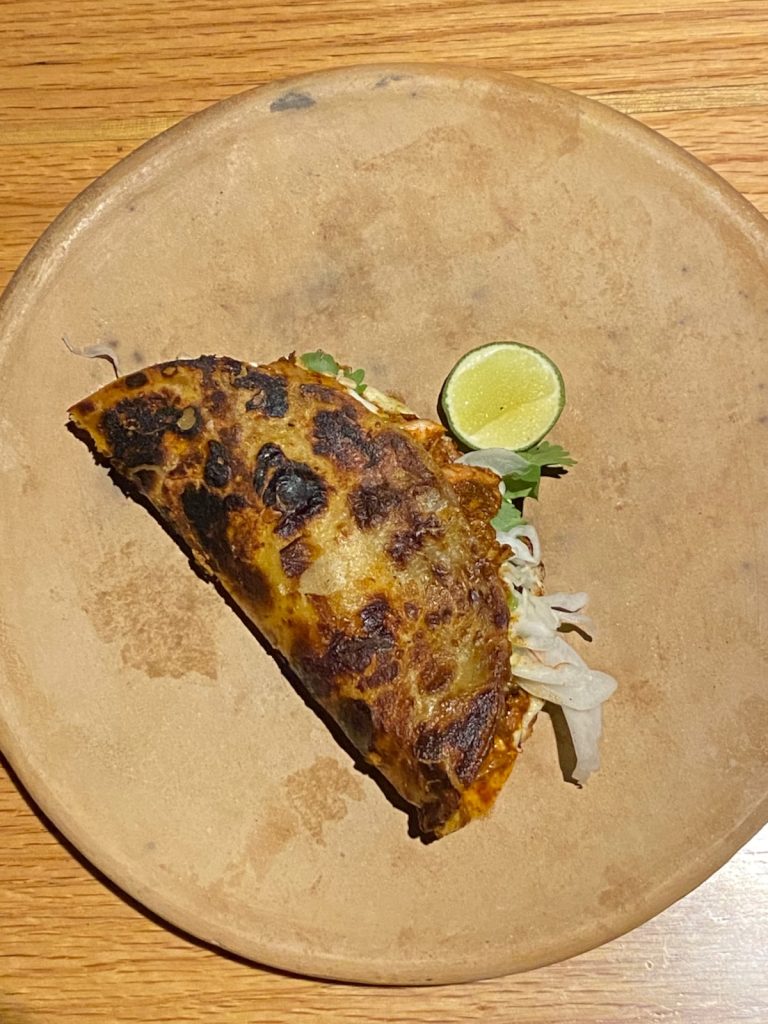 The prettiest food came via tour guide Bany Vargas, who prepared a gorgeous platter to accompany an artisanal mezcal tasting.
The prettiest food came via tour guide Bany Vargas, who prepared a gorgeous platter to accompany an artisanal mezcal tasting.
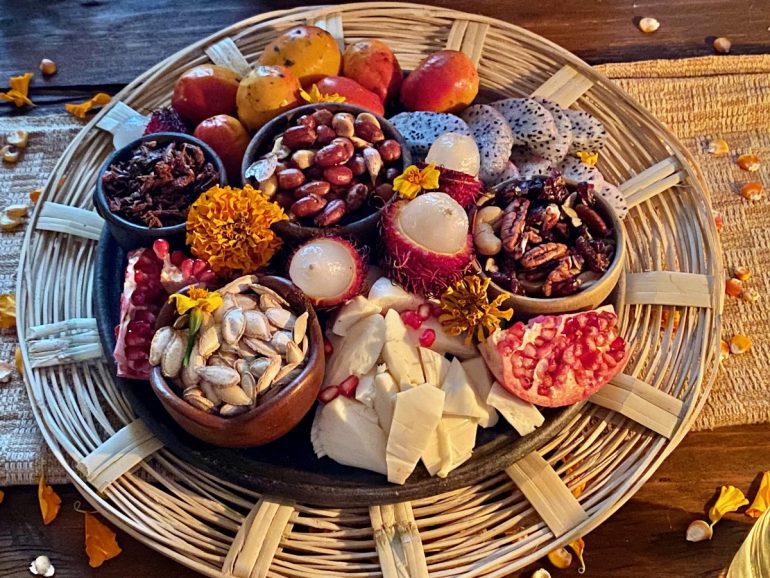 Born in a town outside Oaxaca, Vargas lived most of her life in Santa Barbara before recently moving back to Oaxaca. (The Independent profiled her a few years ago.) She was a terrific guide, intelligent and insightful, and it was a welcome change of pace to talk about home occasionally. On our mammoth day together, she first drove us to the studio of weaver Porfirio Gutierrez in the town of Teotitlán del Valle. We were served a delicious mole for lunch, and we learned a lot about the making of the dyes and the weaving. The carpets in the gallery, however, were less ambitious than the woven art on Gutierrez’s website. Perhaps those are in his Ventura studio?
Born in a town outside Oaxaca, Vargas lived most of her life in Santa Barbara before recently moving back to Oaxaca. (The Independent profiled her a few years ago.) She was a terrific guide, intelligent and insightful, and it was a welcome change of pace to talk about home occasionally. On our mammoth day together, she first drove us to the studio of weaver Porfirio Gutierrez in the town of Teotitlán del Valle. We were served a delicious mole for lunch, and we learned a lot about the making of the dyes and the weaving. The carpets in the gallery, however, were less ambitious than the woven art on Gutierrez’s website. Perhaps those are in his Ventura studio?
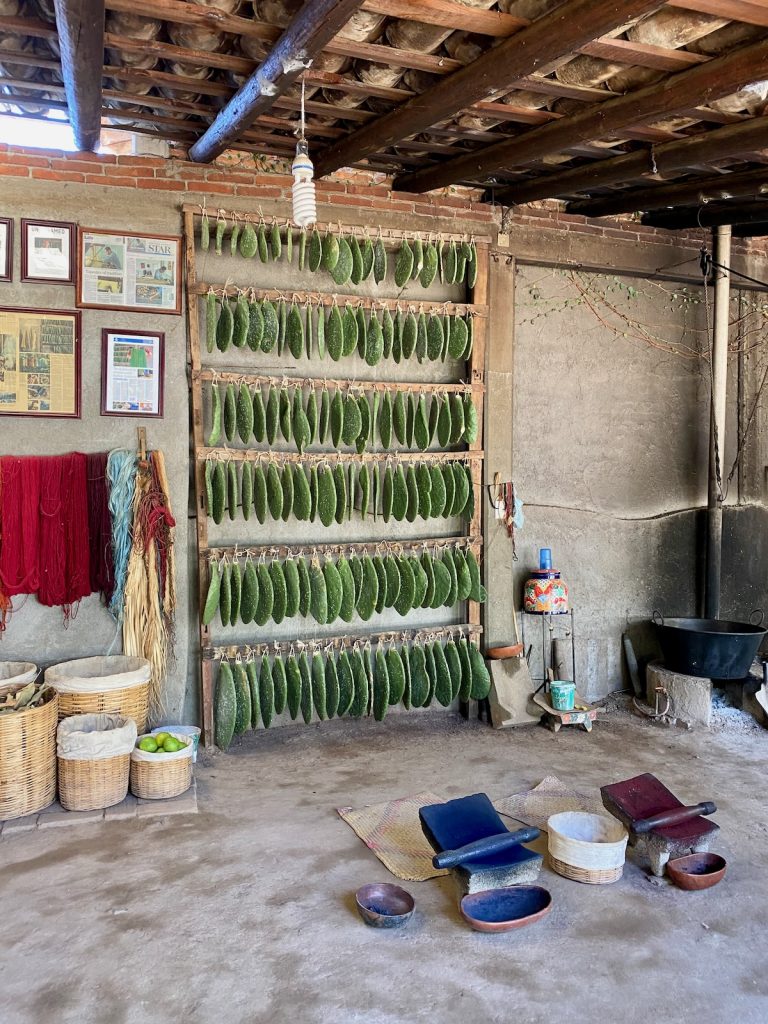
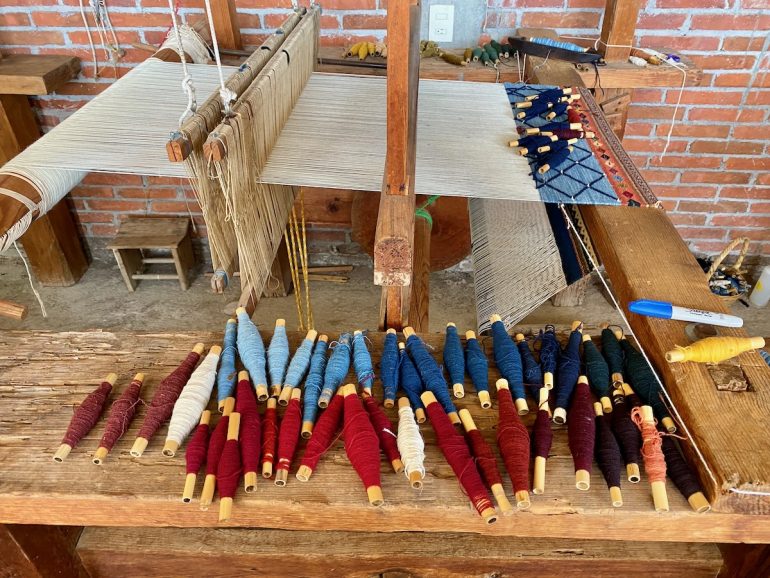 Next was the nearby Casa Viviana, where Doña Viviana Alvárez creates beeswax candles by painstakingly dripping wax down a string. She’s best known for the ones embellished with flowers.
Next was the nearby Casa Viviana, where Doña Viviana Alvárez creates beeswax candles by painstakingly dripping wax down a string. She’s best known for the ones embellished with flowers.
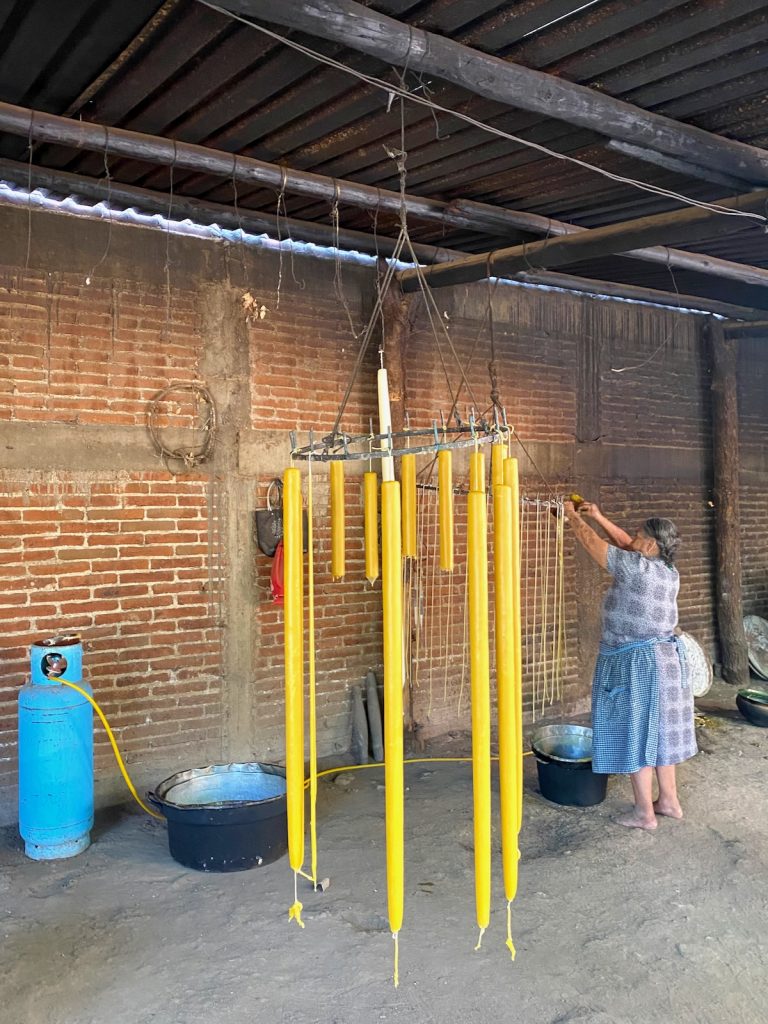
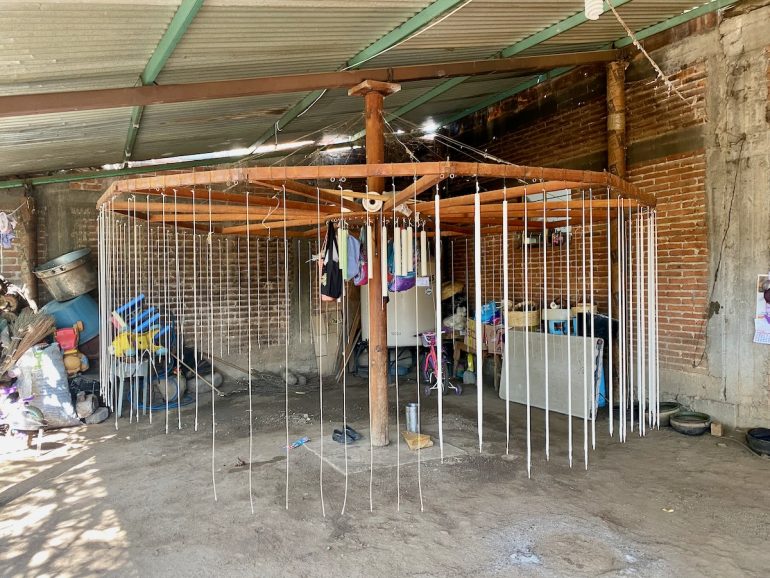
 This looked like an art installation, but it’s actually part of the process of bleaching the wax.
This looked like an art installation, but it’s actually part of the process of bleaching the wax.
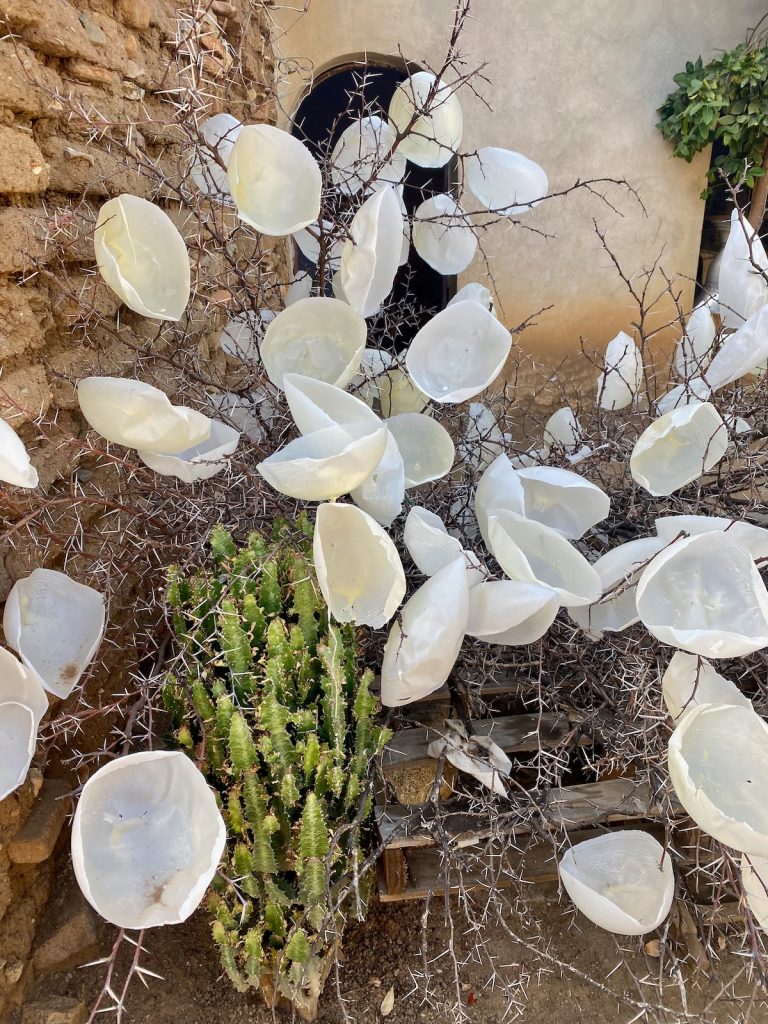 From there, Vargas drove us to the pre-Columbian archaeological site of Monte Alban, where she had arranged for us to be the one group per day allowed in after hours—not only did we have the ruins to ourselves, we also avoided the midday sun. The archeologist guide who accompanied us had befriended the stray dogs, so they were never far from our group.
From there, Vargas drove us to the pre-Columbian archaeological site of Monte Alban, where she had arranged for us to be the one group per day allowed in after hours—not only did we have the ruins to ourselves, we also avoided the midday sun. The archeologist guide who accompanied us had befriended the stray dogs, so they were never far from our group.
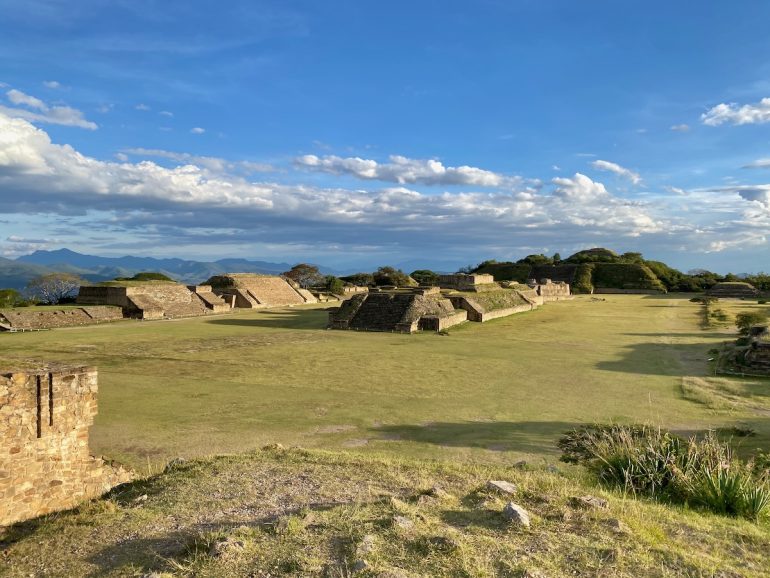
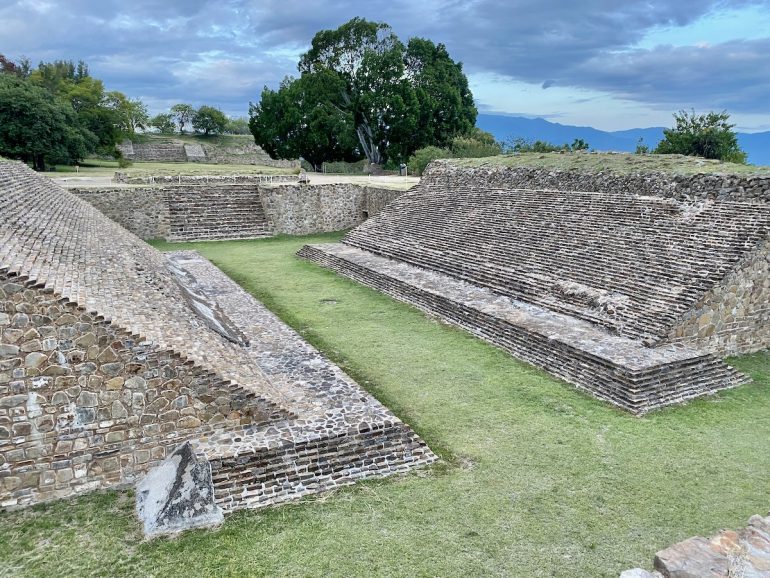
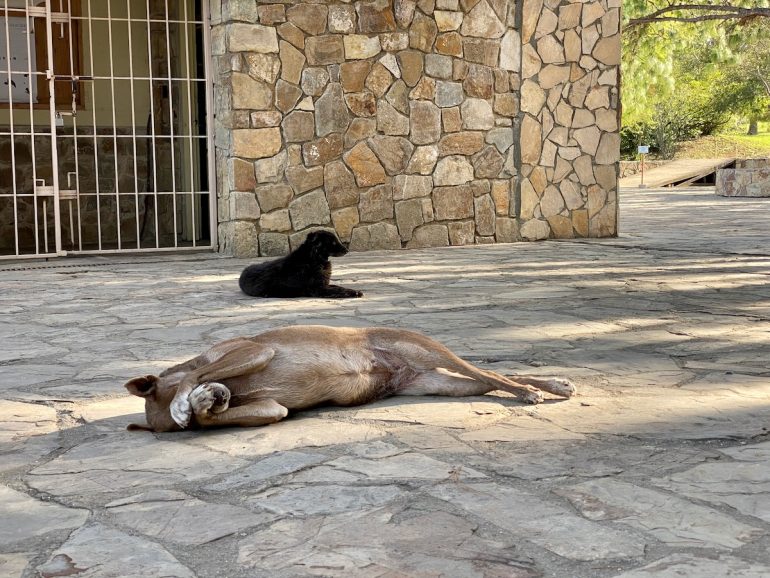 We arrived back at the hotel totally fried, only to find that a calenda—a parade/street party—was parked in front. There was a lot of drinking and there were a lot of tubas, and the music had an oom-pah-pah effect. It was fascinating and fun to see, but given our sleep deficit, we weren’t unhappy that they were gone by the time we returned from dinner.
We arrived back at the hotel totally fried, only to find that a calenda—a parade/street party—was parked in front. There was a lot of drinking and there were a lot of tubas, and the music had an oom-pah-pah effect. It was fascinating and fun to see, but given our sleep deficit, we weren’t unhappy that they were gone by the time we returned from dinner.
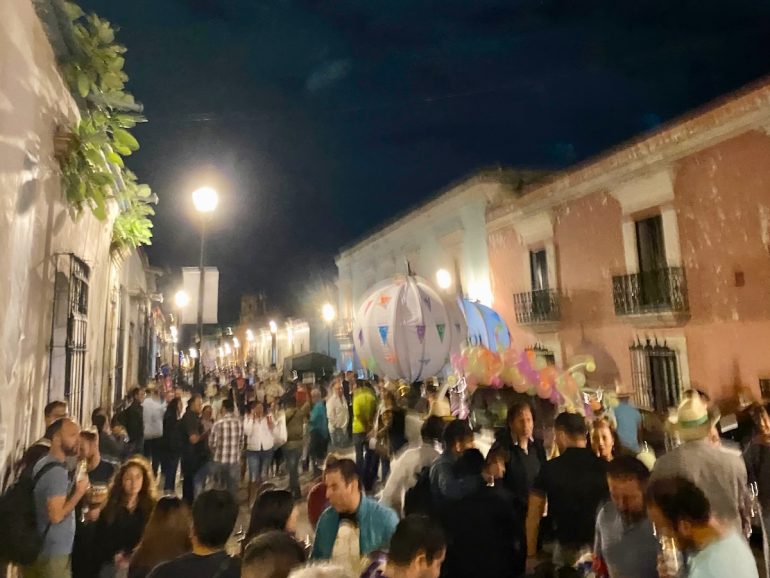 Most of our final day was spent on a Culinary Backstreets food tour. We had booked a private outing because at some point in life, strangers aren’t worth the risk. The guide, Luis, was young but knowledgeable, and he never came off like he was reciting. We began at Mercado de la Merced, where he bought enough food for a full meal.
Most of our final day was spent on a Culinary Backstreets food tour. We had booked a private outing because at some point in life, strangers aren’t worth the risk. The guide, Luis, was young but knowledgeable, and he never came off like he was reciting. We began at Mercado de la Merced, where he bought enough food for a full meal.
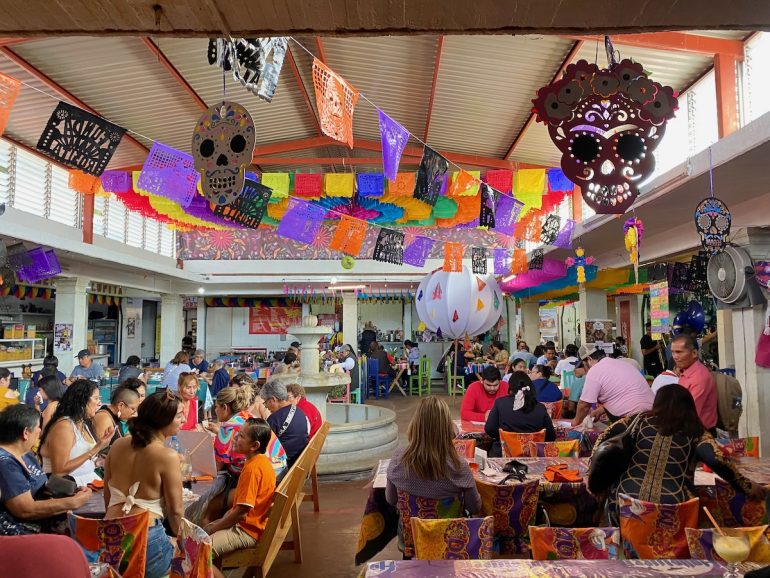

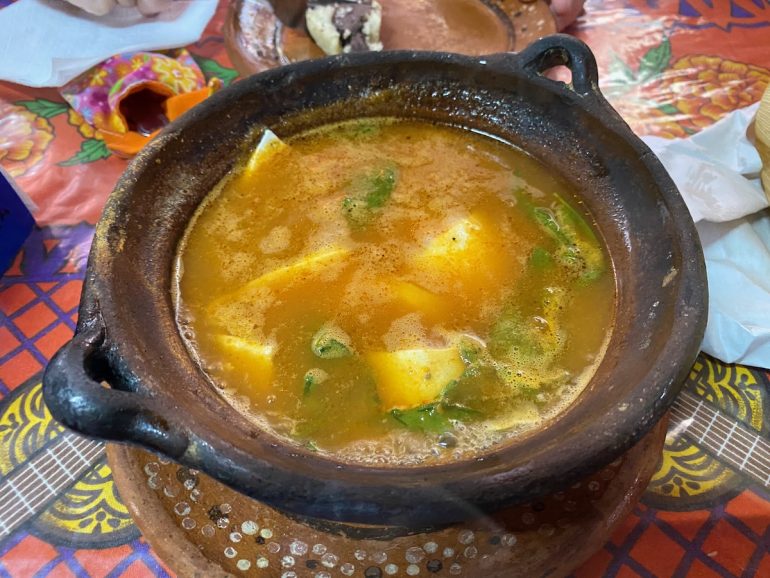 On the way out, he picked up some hoja santa leaves and corn, and we went to a local mollino to get the corn milled.
On the way out, he picked up some hoja santa leaves and corn, and we went to a local mollino to get the corn milled.
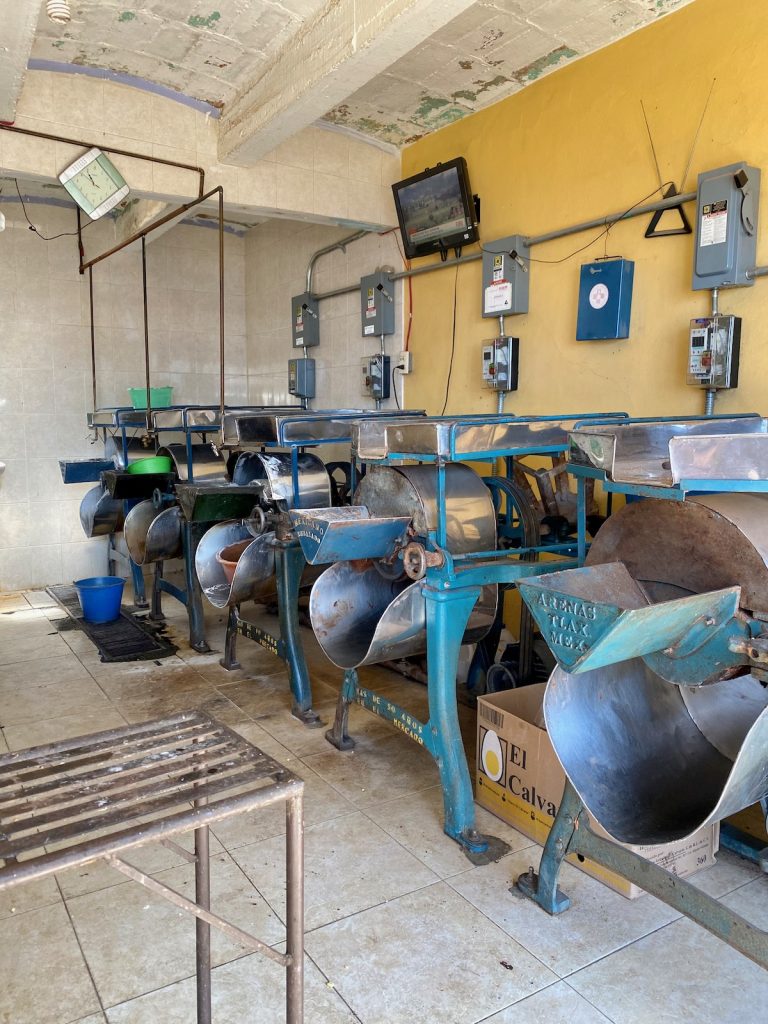 We then strolled to an unlabeled restaurant called Chayito, where the cook made a perfectly simple tortilla-and-egg dish with our corn and hoja santa.
We then strolled to an unlabeled restaurant called Chayito, where the cook made a perfectly simple tortilla-and-egg dish with our corn and hoja santa.
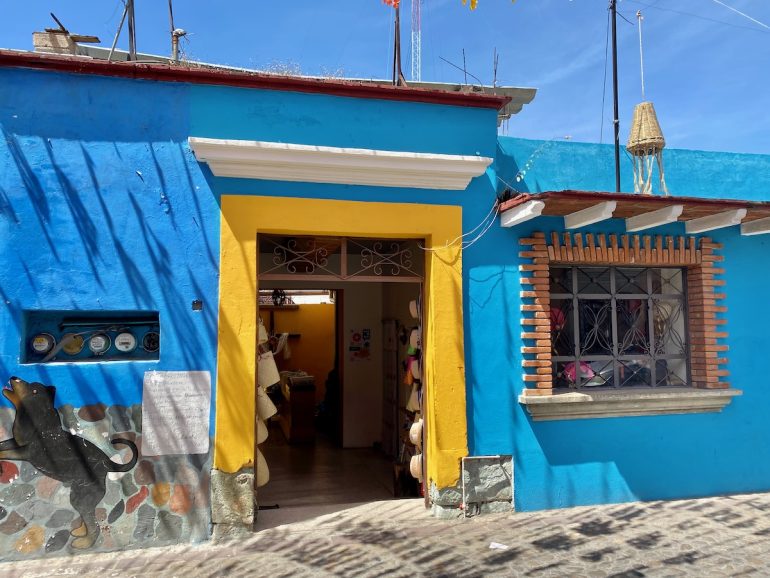
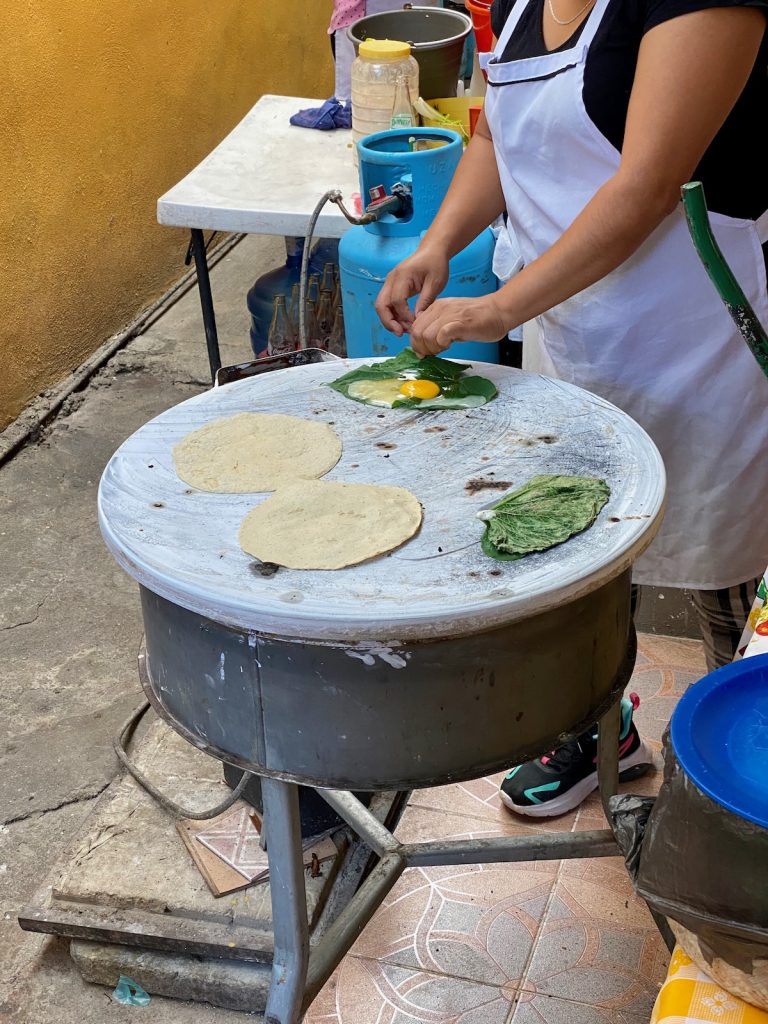 The next few hours were spent walking, eating, and chatting. For me, the highlight was the street-food vendor in El Llano park, who made amazing memelas (kind of like an open-faced taco, but on a thicker tortilla). We would never have known which vendor to trust, or how to order, without Luis.
The next few hours were spent walking, eating, and chatting. For me, the highlight was the street-food vendor in El Llano park, who made amazing memelas (kind of like an open-faced taco, but on a thicker tortilla). We would never have known which vendor to trust, or how to order, without Luis.
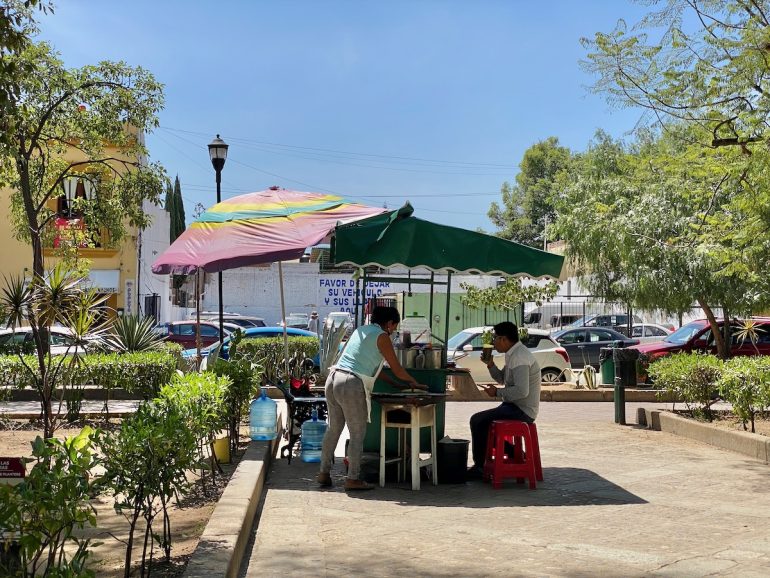
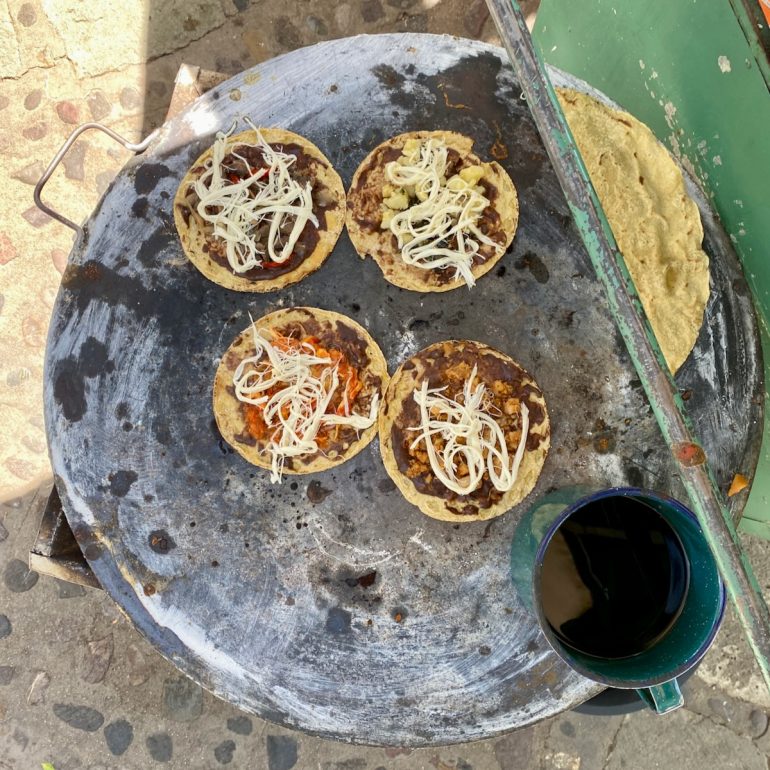
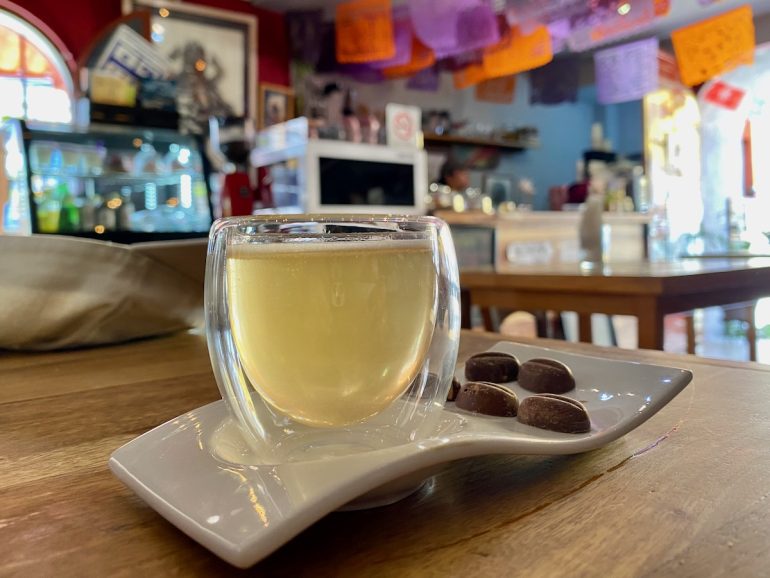 By the time we walked through the famous Pasillo del Humo at Mercado 20 de Novembre, we never wanted to eat again, so we turned down Luis’s offer of meat. But we mustered up enough appetite for mole—it’s one of Adam’s favorite foods—followed by sorbet. The mole I liked most isn’t in the photo. It was tomatillo-based mole verde, served over white beans. If we can find fresh epazote and hoja santa here, we’ll attempt to make it ourselves.
By the time we walked through the famous Pasillo del Humo at Mercado 20 de Novembre, we never wanted to eat again, so we turned down Luis’s offer of meat. But we mustered up enough appetite for mole—it’s one of Adam’s favorite foods—followed by sorbet. The mole I liked most isn’t in the photo. It was tomatillo-based mole verde, served over white beans. If we can find fresh epazote and hoja santa here, we’ll attempt to make it ourselves.
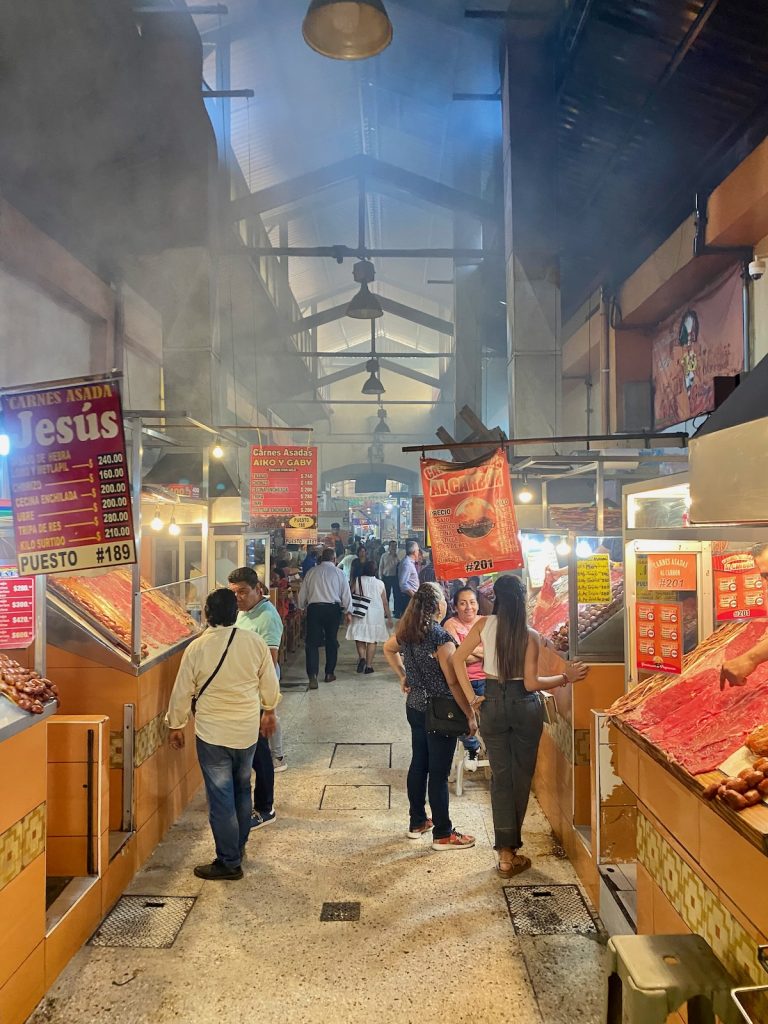
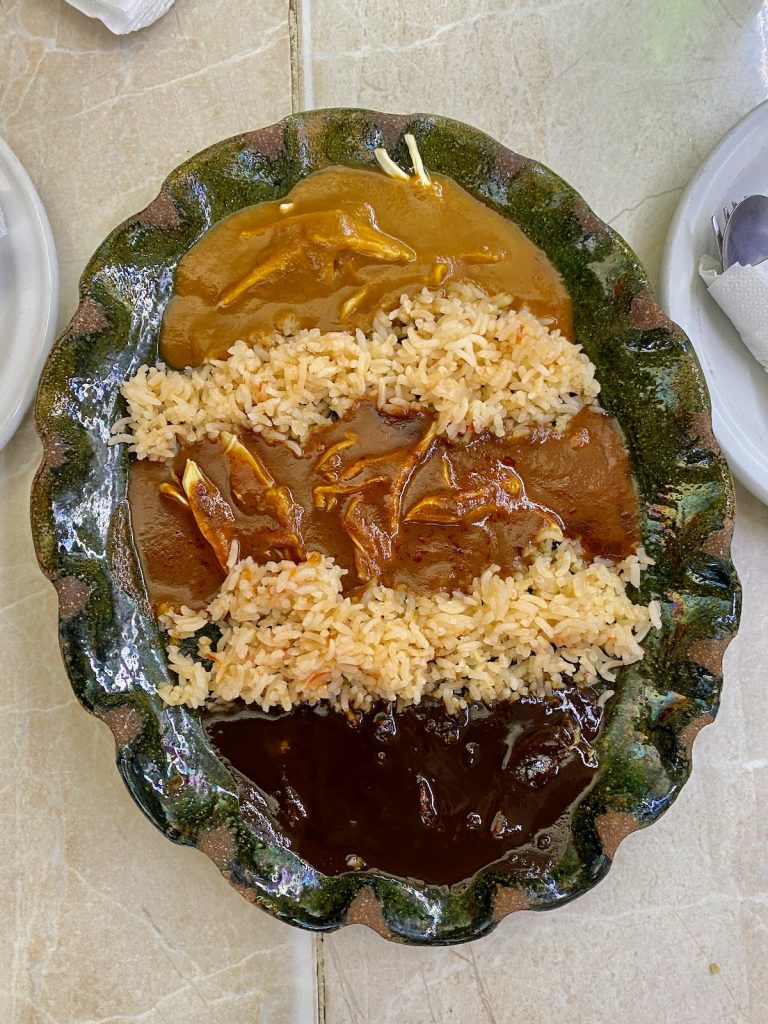
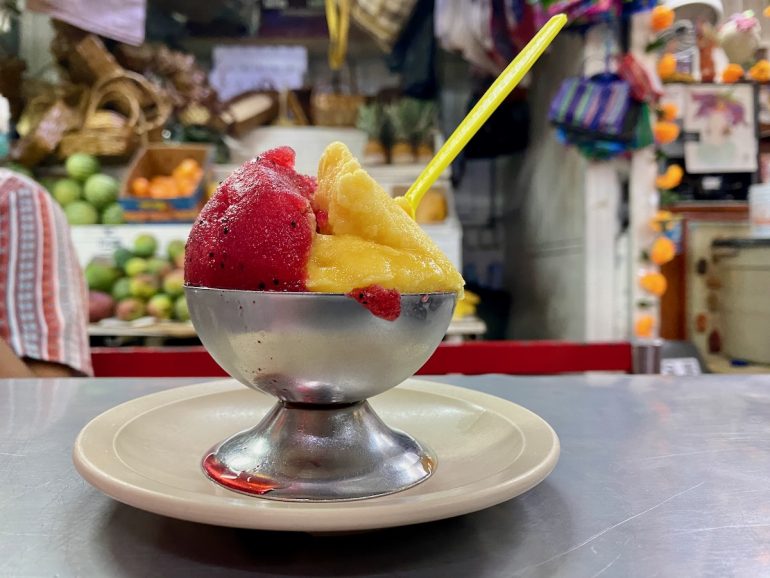 Alas, the mole paste we bought to take home was confiscated at the airport.
Alas, the mole paste we bought to take home was confiscated at the airport.
 On our final night, Adam and I had a drink at a swanky, second-floor cocktail bar called Selva, where another parade passed by. It’s hard not to love a moment like that.
On our final night, Adam and I had a drink at a swanky, second-floor cocktail bar called Selva, where another parade passed by. It’s hard not to love a moment like that.
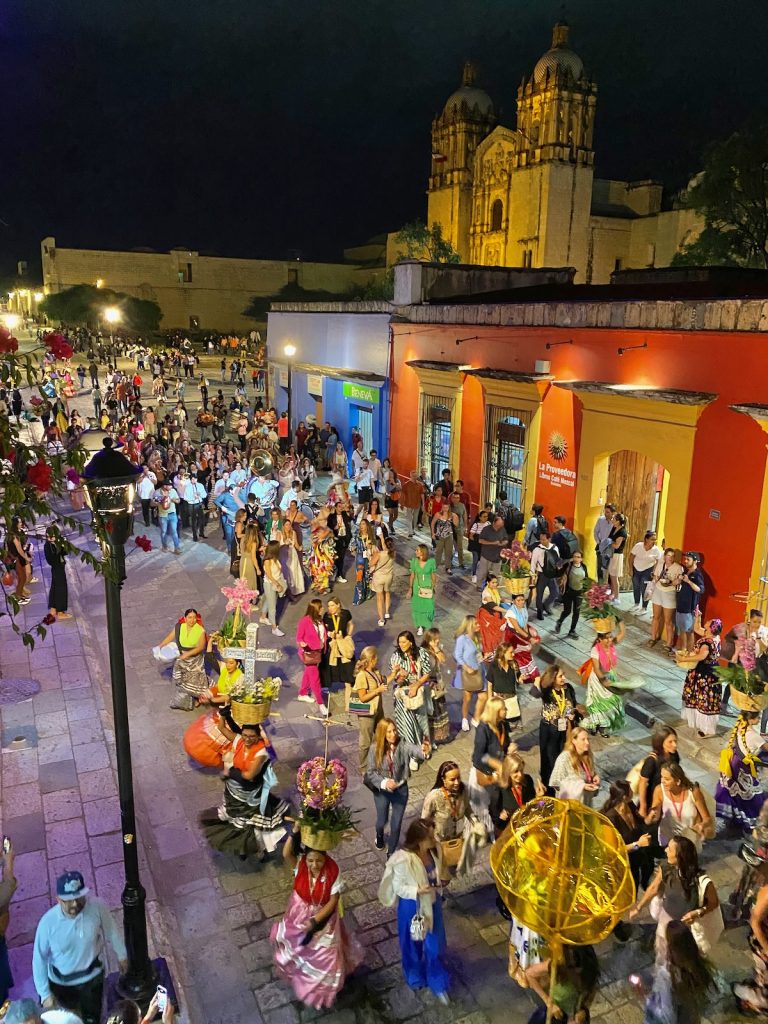 P.S. On the return flight, Adam and I scored an exit row with no one in the middle seat. I got the window—literally.
P.S. On the return flight, Adam and I scored an exit row with no one in the middle seat. I got the window—literally.
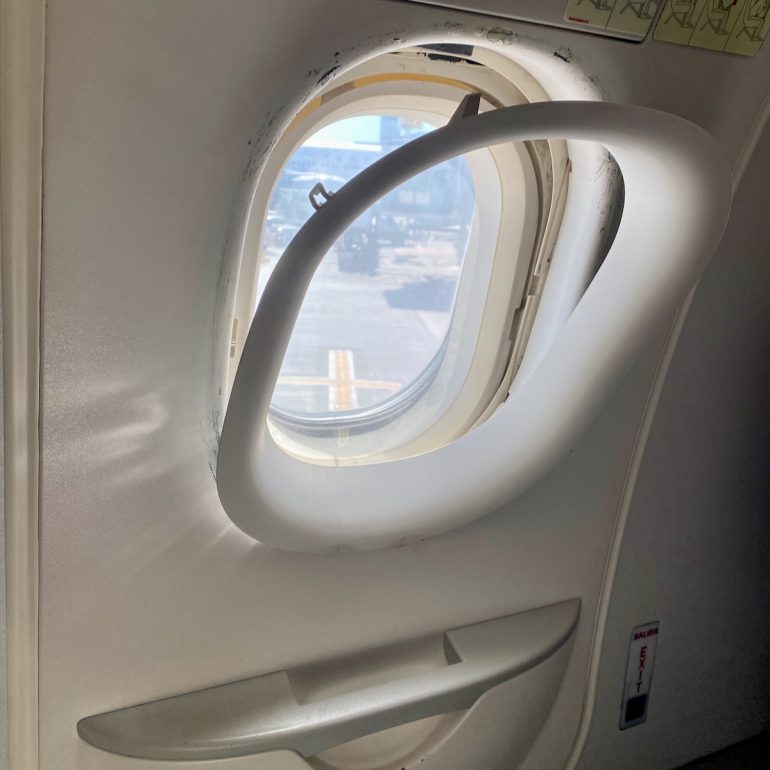
·············
Previous travel coverage:
↓↓↓ Driving Through the Heart of Hokkaido
••• Tokyo Is a World Unto Itself
••• Paso Robles, Pinnacles National Park, and Beyond
••• A Review of the Inn at Mattei’s Tavern
••• Another Quickie in L.A.
••• Sitting Pretty at the One & Only Mandarina
••• The Mysteries of Istanbul
••• Palm Springs: Midweek at the Oasis
••• A Summer Swing Through the Northeast
••• Why Is Everyone Going to Portugal?
••• Patagonia Made Easy
••• A Quickie in L.A.
••• From Penthouse to Pavement in Mexico City
••• Do Greek Islands Live Up to the Fantasy?
••• Splendid Isolation at Utah’s Lodge at Blue Sky
••• Three Reasons to Visit Paso Robles Now
••• The Rebirth of the Cuyama Buckhorn
Sign up for the Siteline email newsletter and you’ll never miss a post.


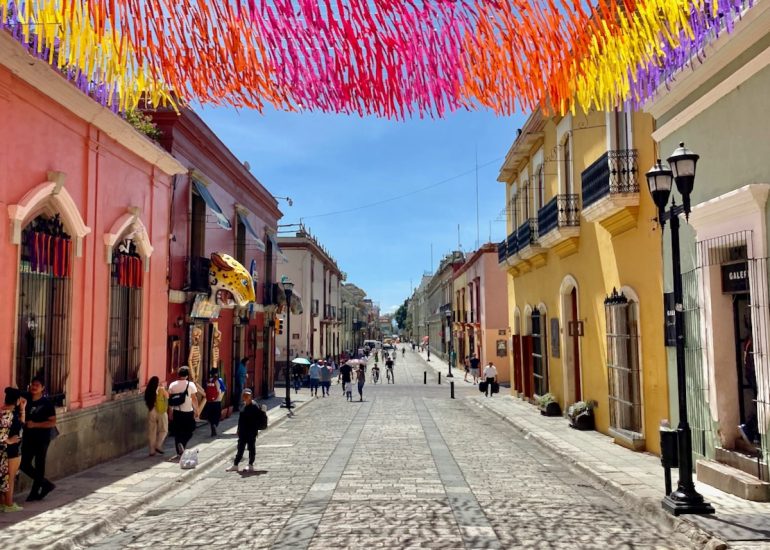







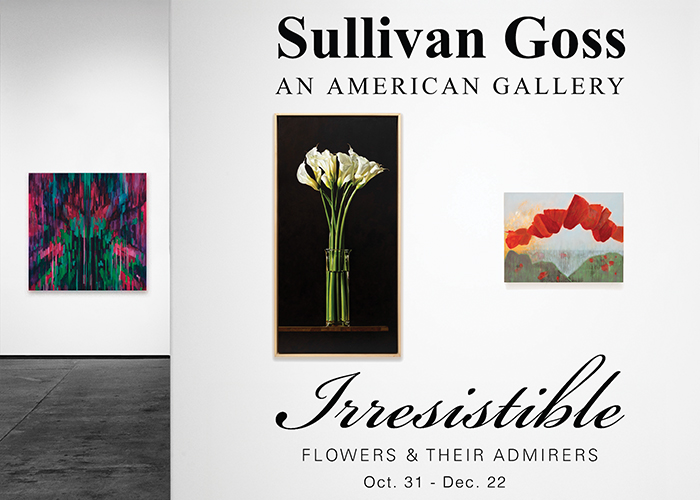




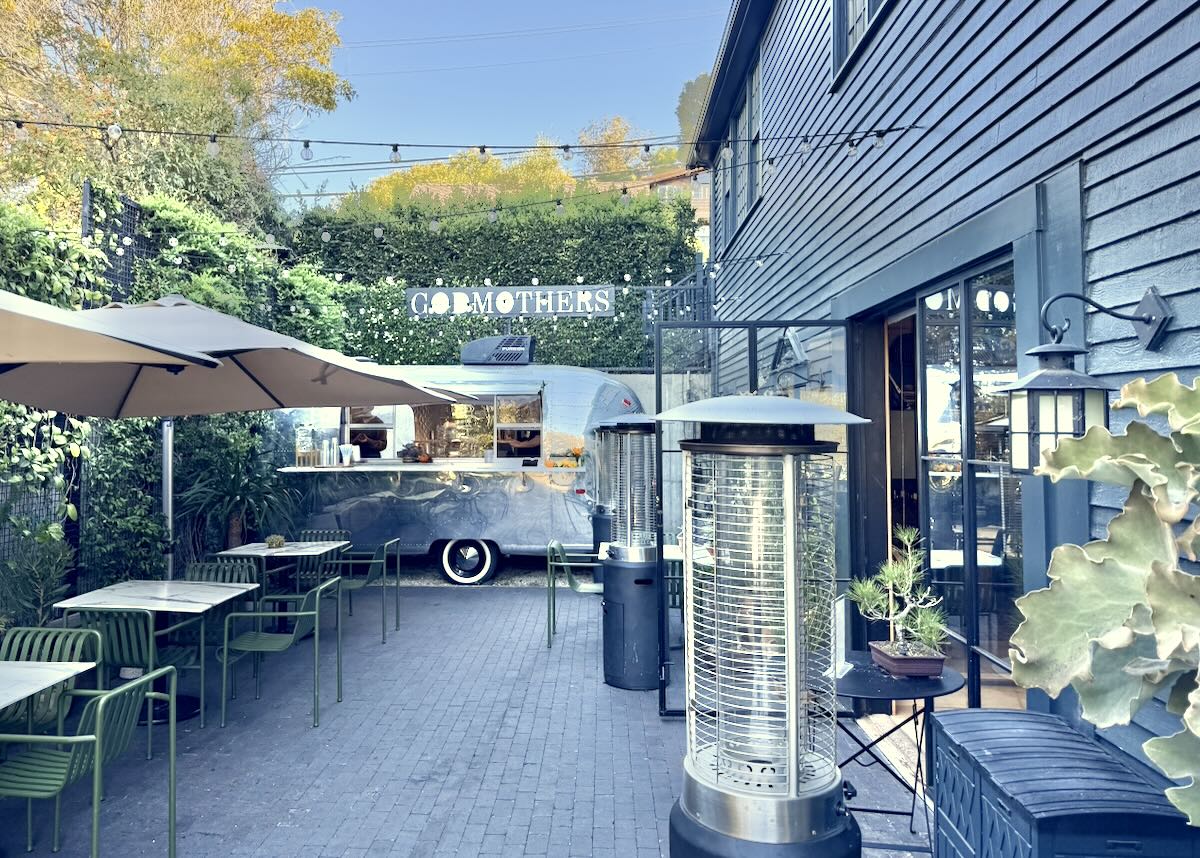
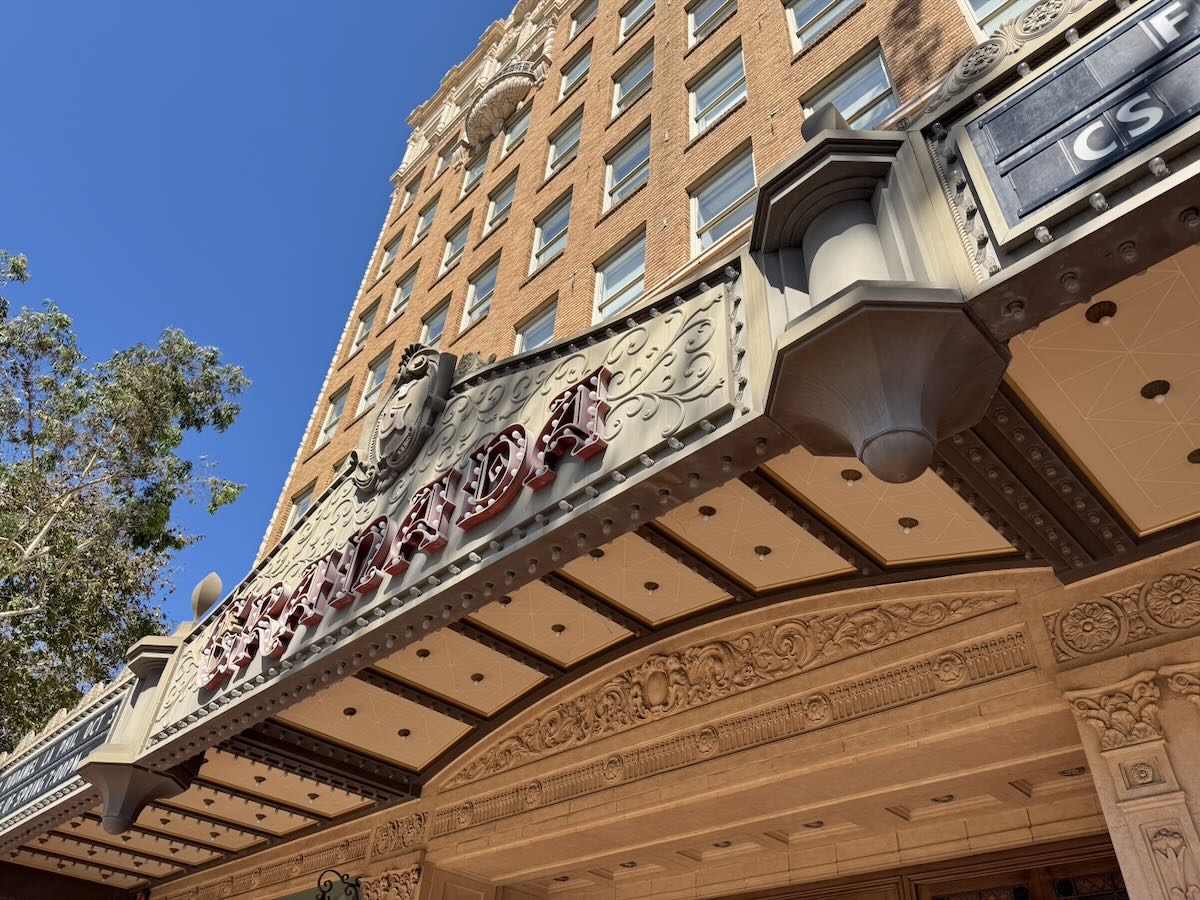

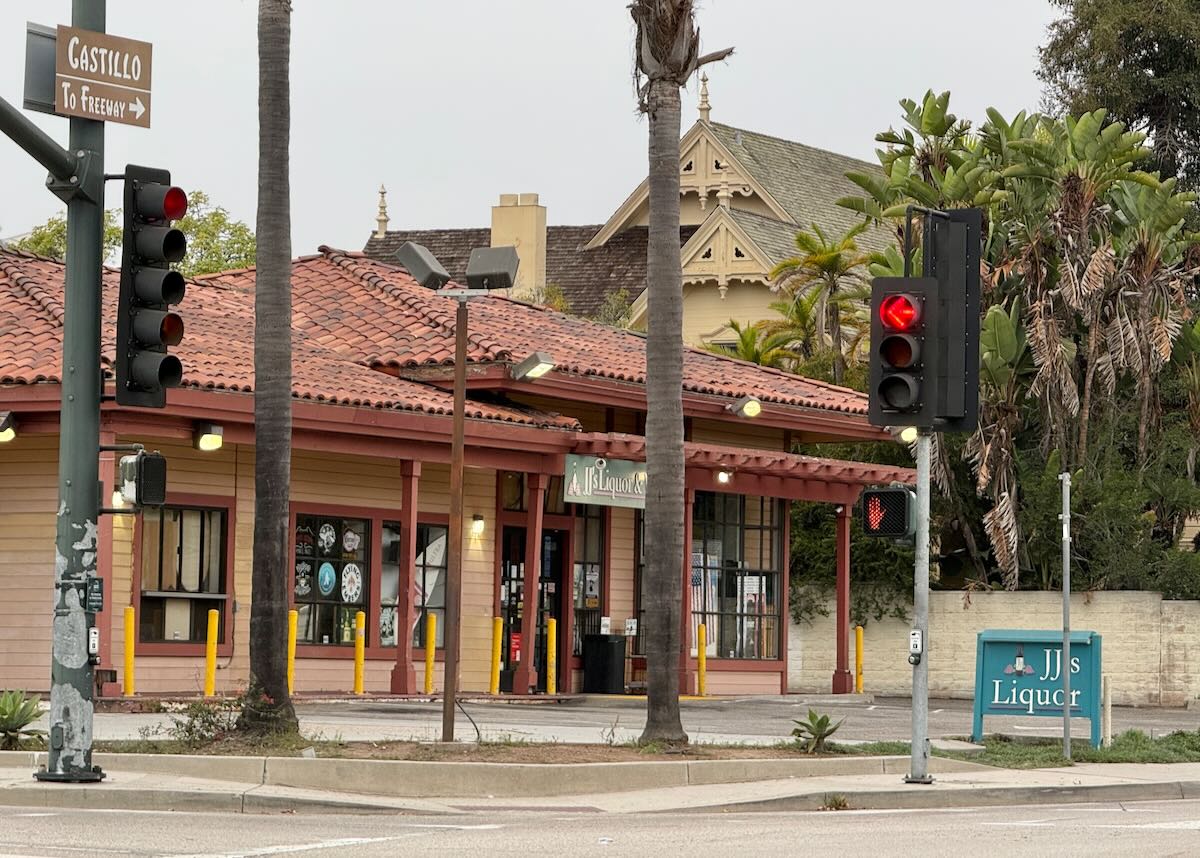

While a confusing review to read (couldn’t tell if you actually liked Oaxaca, or merely tolerated it), I’m glad to see Oaxaca featured. I found it to be one of my favorite places I’ve ever visited. Unpretentious, authentic, friendly, colorful… and while yes, it is an old city and not “Disneyfied,” it’s lively and colorful. The food is among the best I’ve had… Boulenc (best brunch and breads in the city), Nois, and Los Danzantes are just a few of my faves. One thing I’d never highlight – that direct flight. Direct or not, Volaris was the worst airline I have ever experienced. If you check a bag, give yourself at least 3 hours at the airport even with TSA precheck. And yes – they really do charge for water. Dirty and uncomfortable airline. But don’t let that keep you from going there.
Agree…Erik can you deliver a verdict?
I was ambivalent, liking some aspects and not others, and while I’m glad I went, I won’t be returning—less because of some failing on the city’s part than it just not being a good fit for me.
Love these detailed reviews of places I’ll likely never visit but having lived vicariously through your experience I feel as though I’ve been there.
Ditto!!
Just what I was going to say, Mark!
Missed Noche de Rabanos by a hair (Night of the Radishes, in Oaxaca). It was last night, every December 23rd.
I enjoyed Oaxaca immensely a few years ago — like you loved Criollo, i toured the hotel you stayed at (it was just about to open) and loved the architecture and design, but glad to know about the flaws (hate noisy hotels!). You missed a couple of amazing museums (contemporary art and ceramics) and mentioning Toledo and his fab gates and library..i also bought at that art collective shop and the printmaking tradition there is remarkable and fun to explore and buy some amazing woodblock prints. For those who love Oaxaxa or plan to visit – i wrote a two part article for Luxury Latin America (https://www.luxurylatinamerica.com/mexico/spanish_oaxaca.html that might also be helpful (Hope this is okay to share Erik?) Vaya con dios! Leslie
Do you have contact information for Baby Vargas? I’m not having any luck via the website and would like to contact her regarding a tour. Thanks and thank you for all the Oaxaca information!